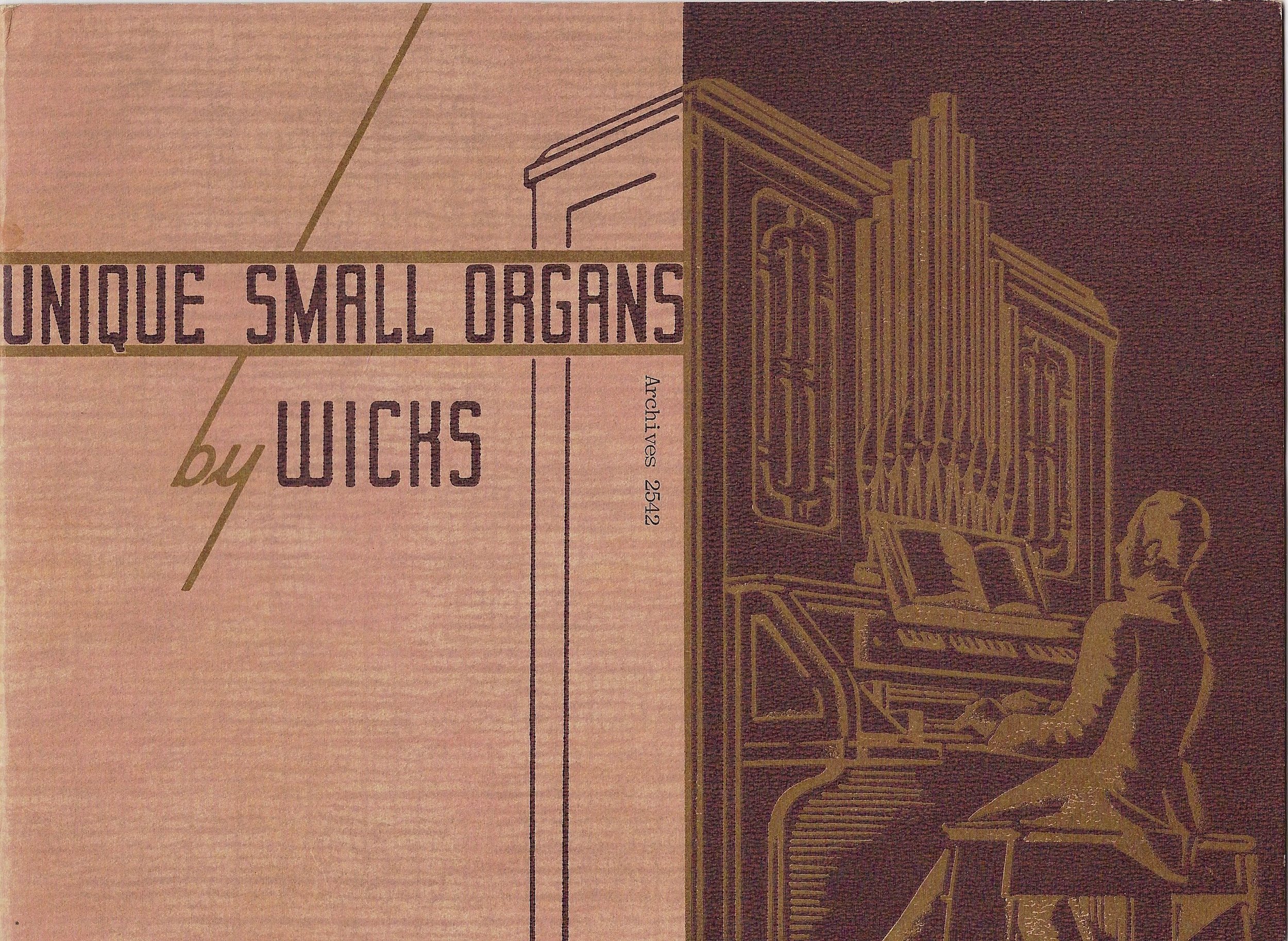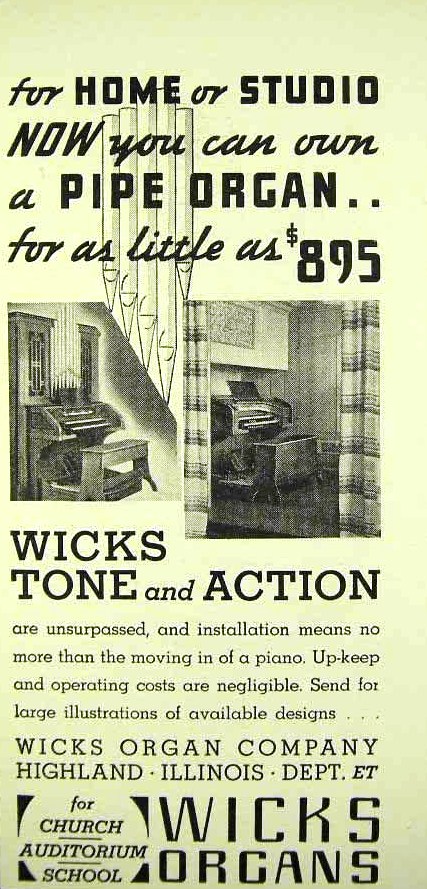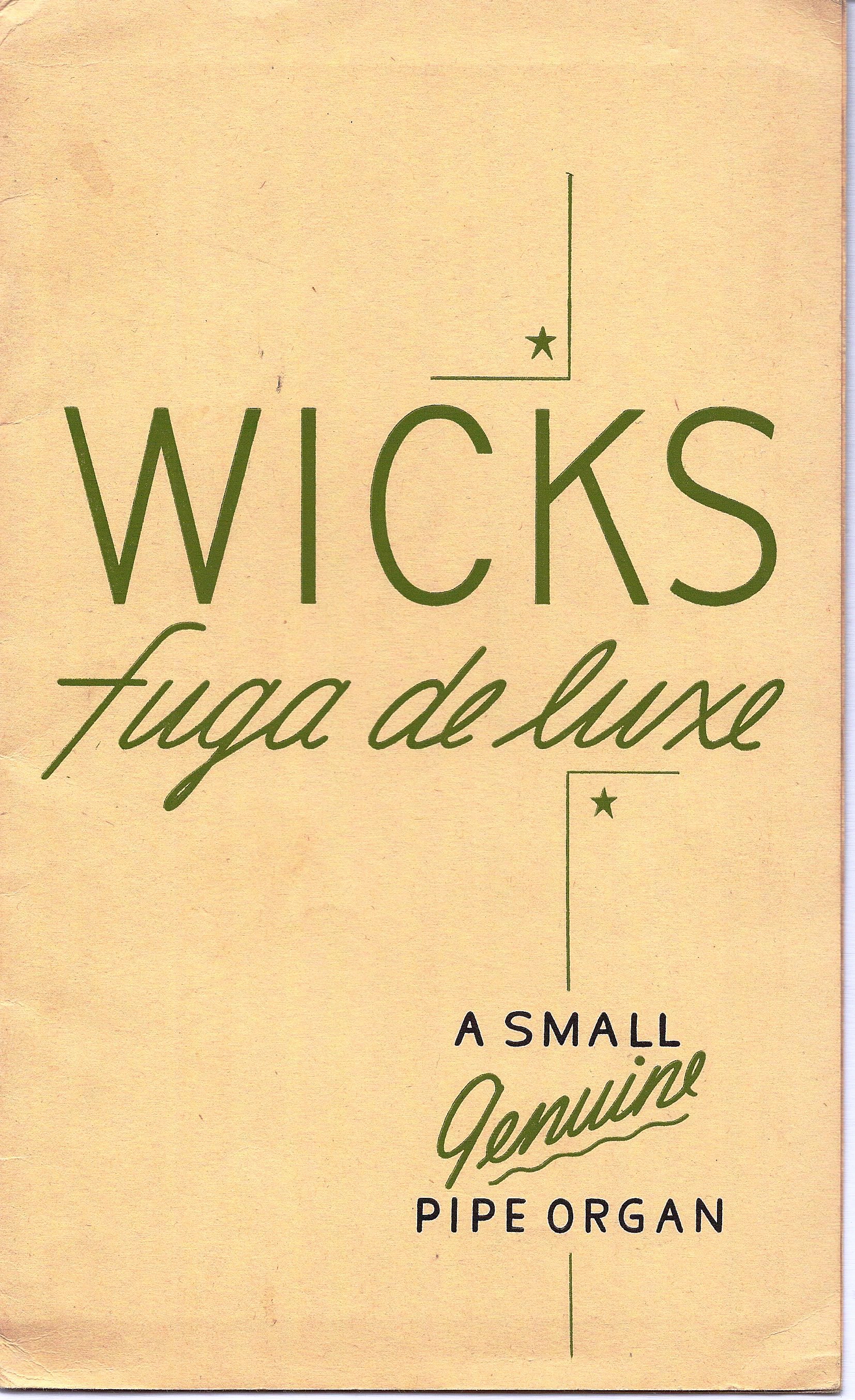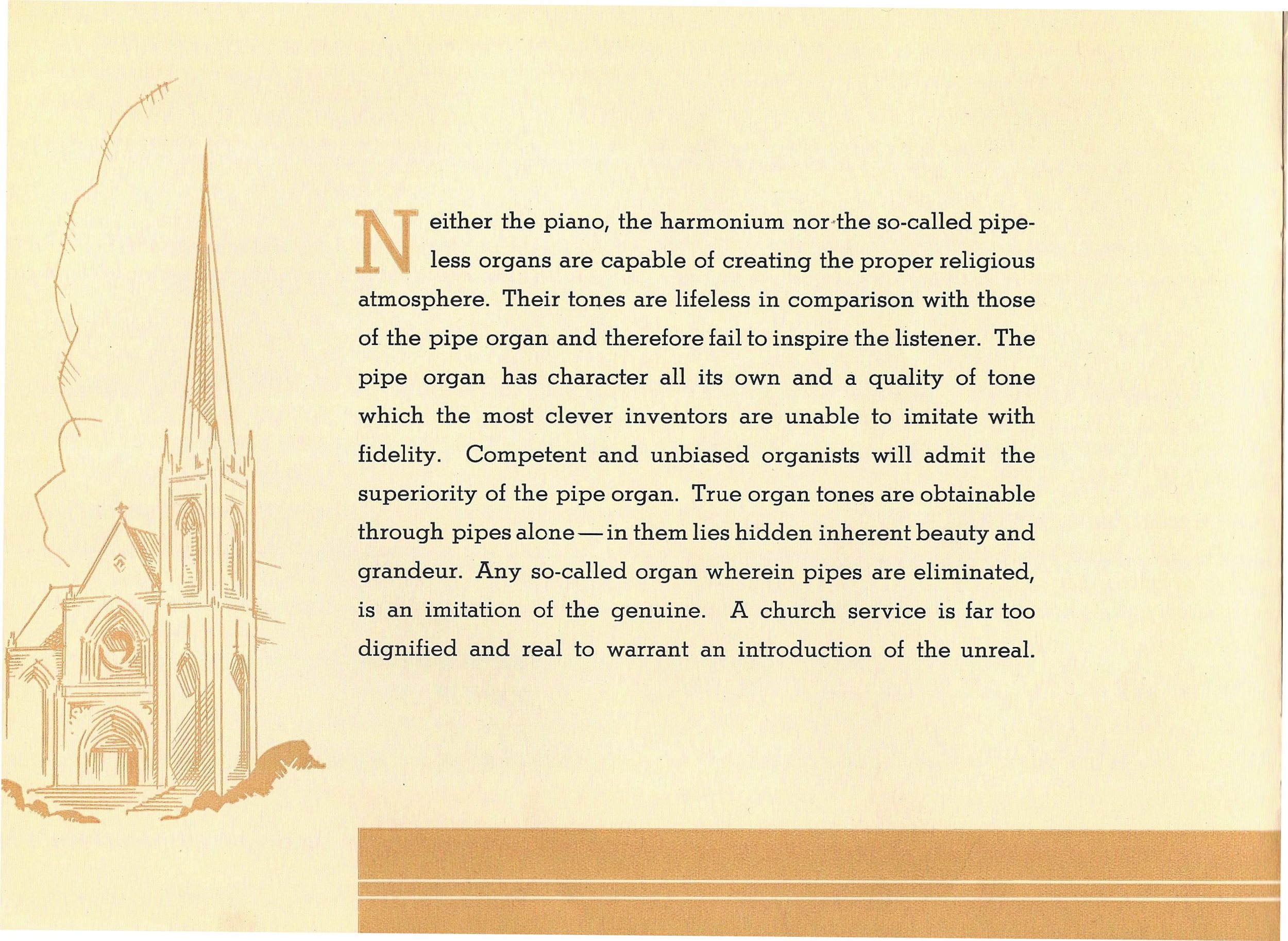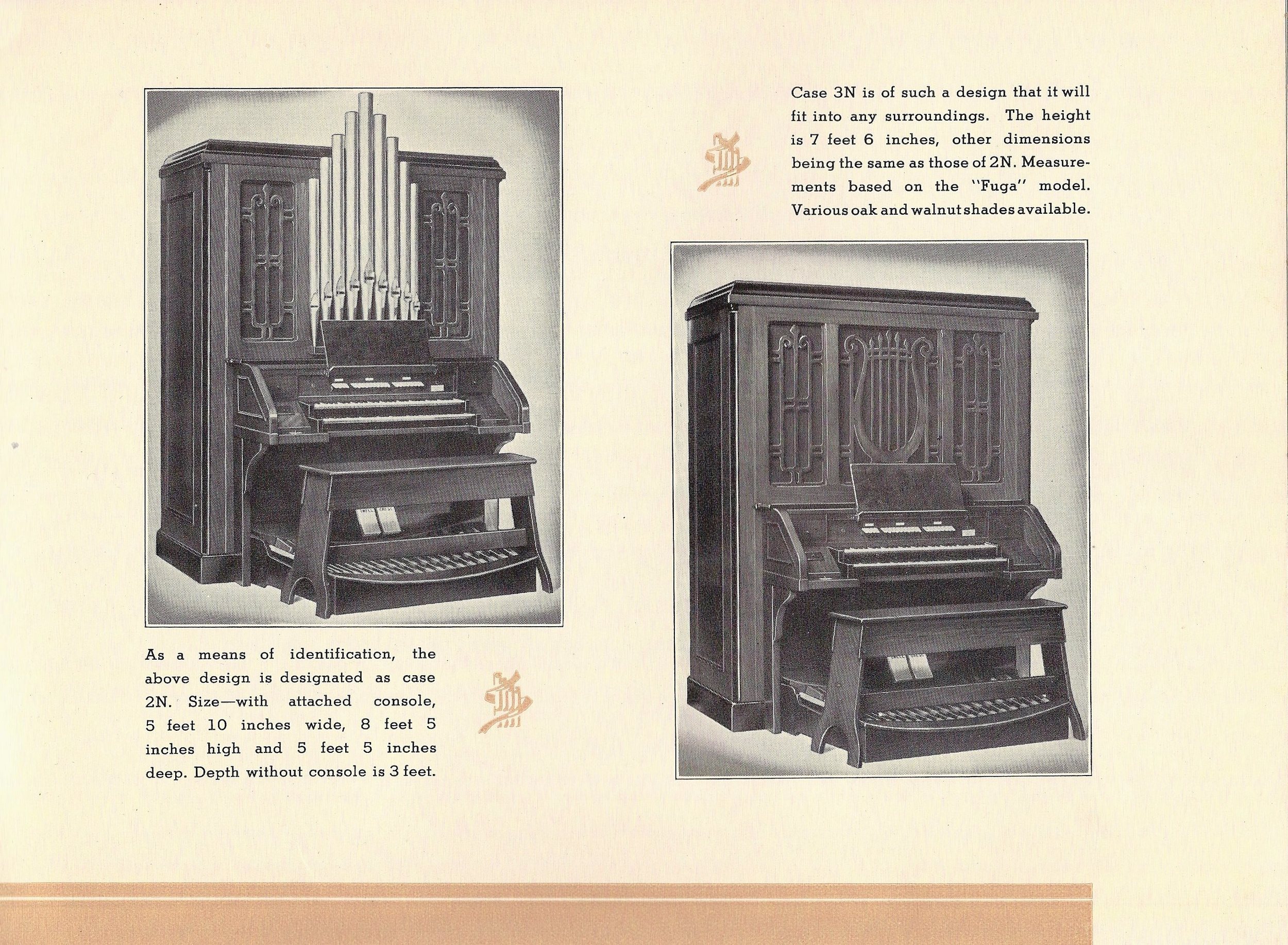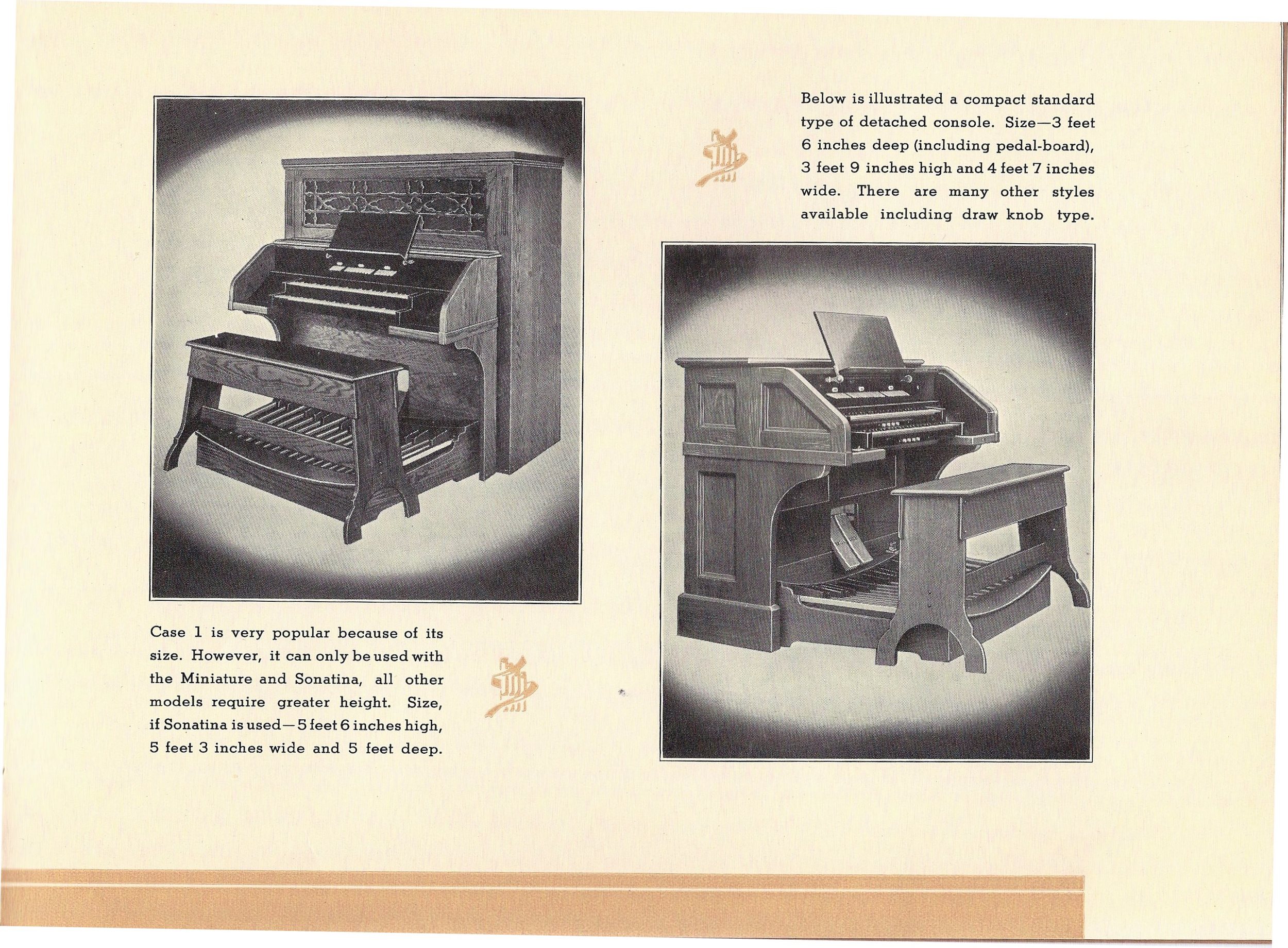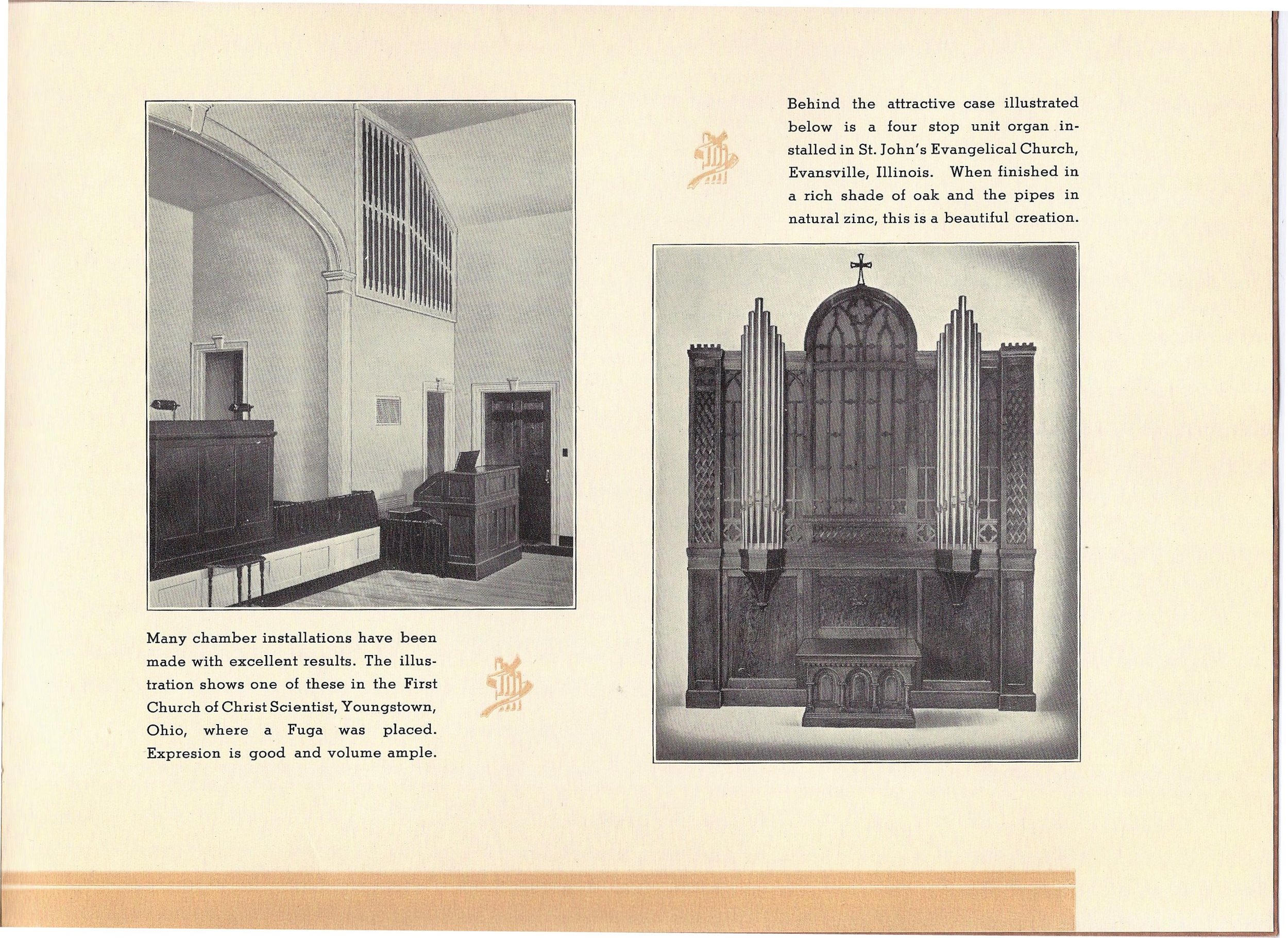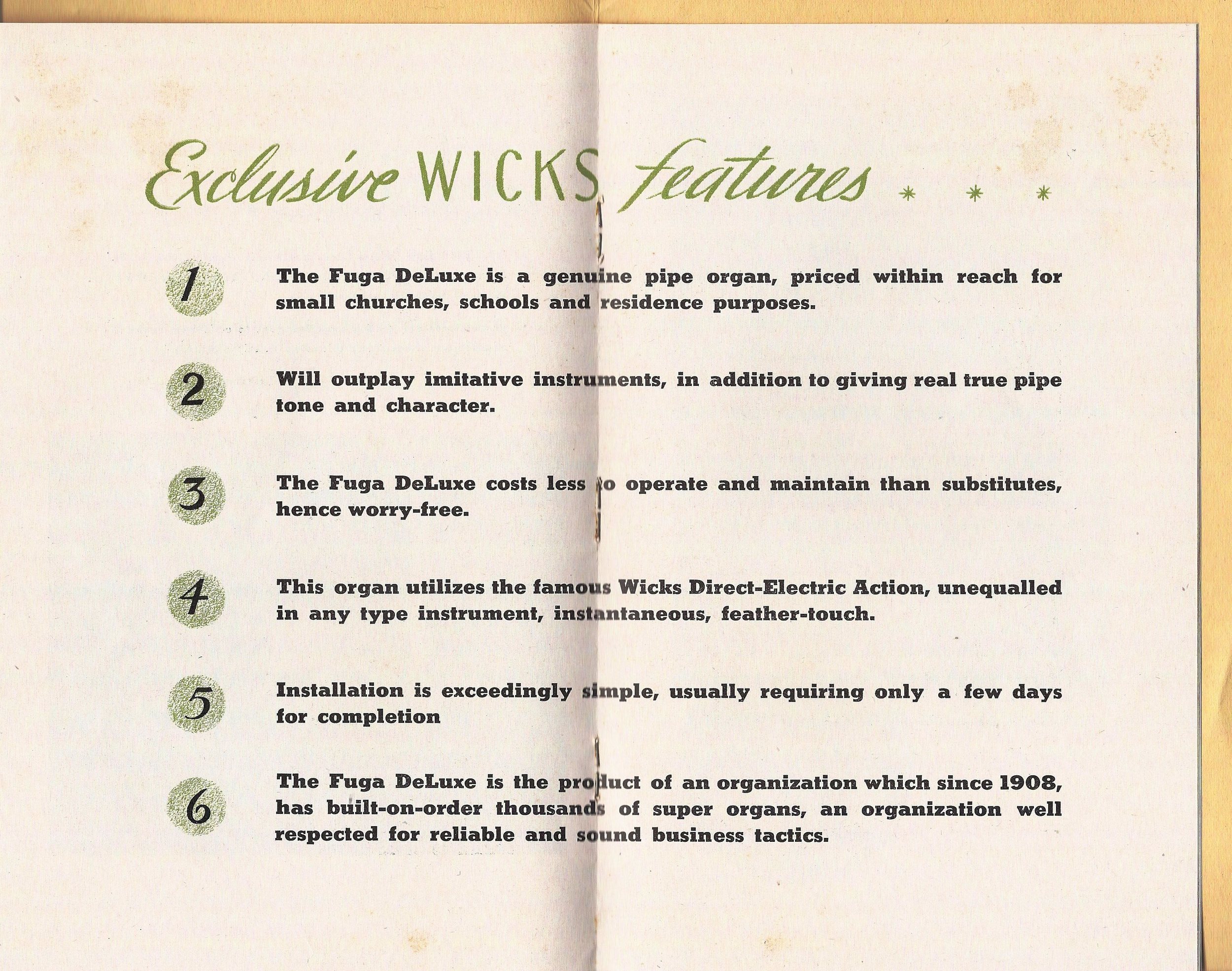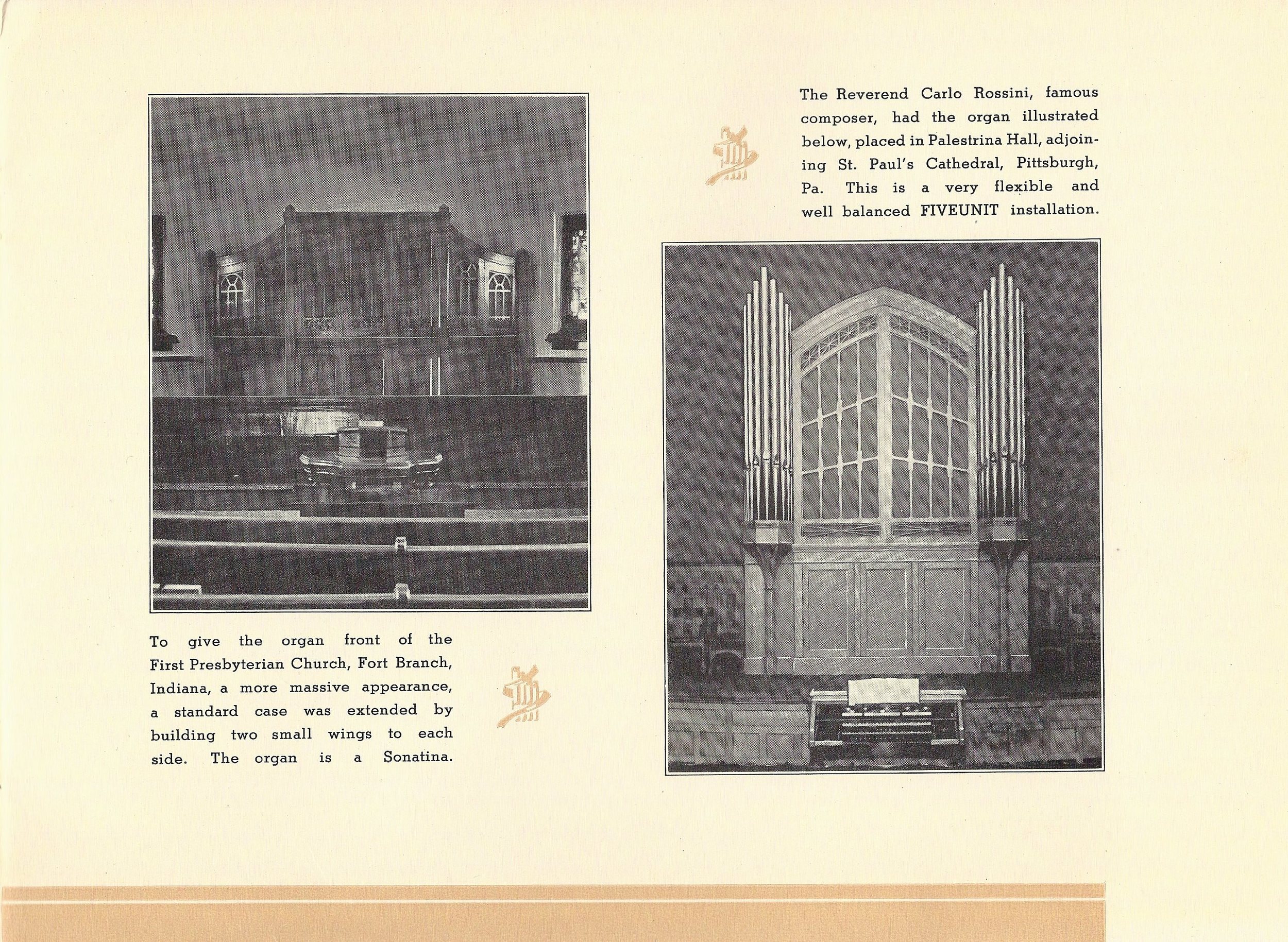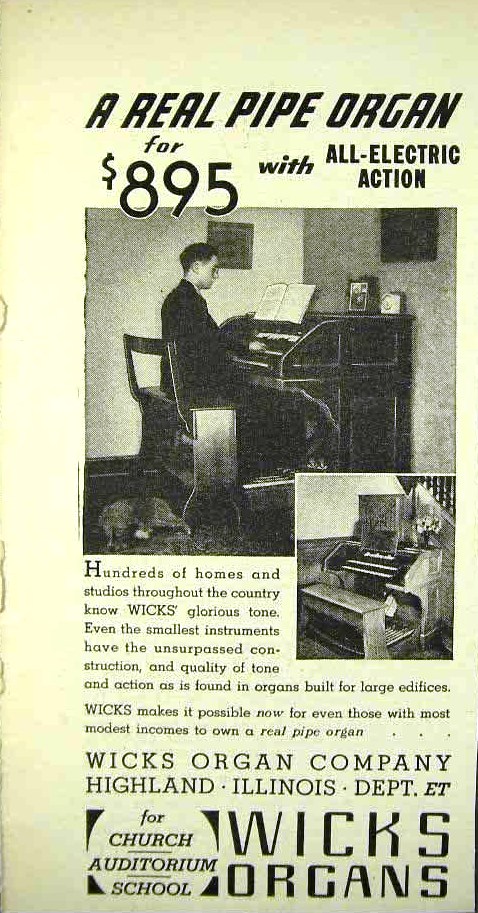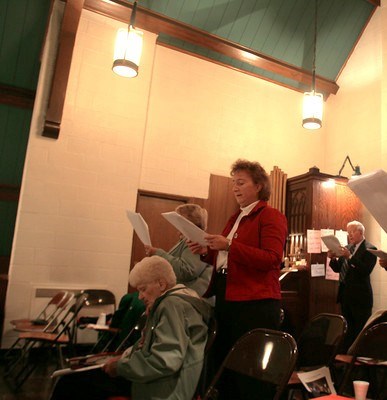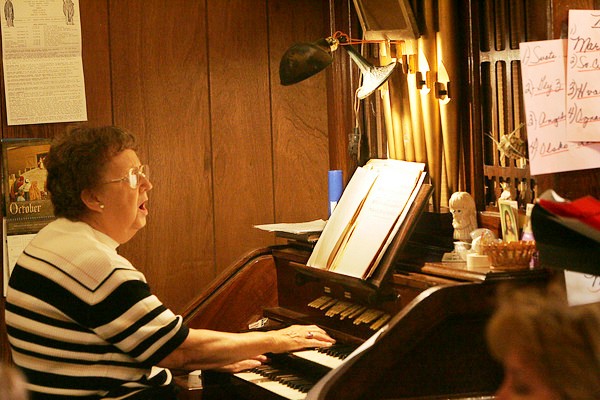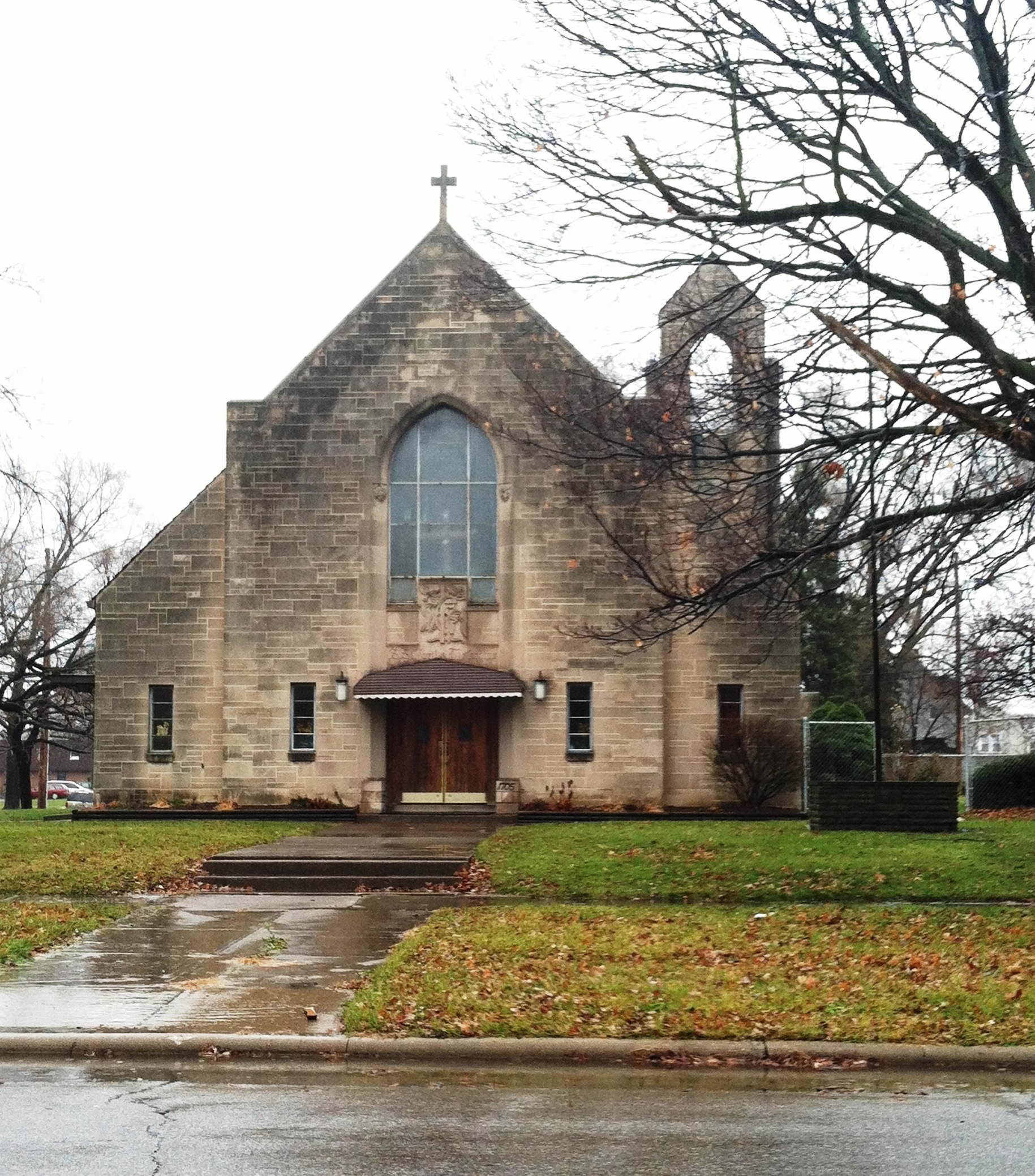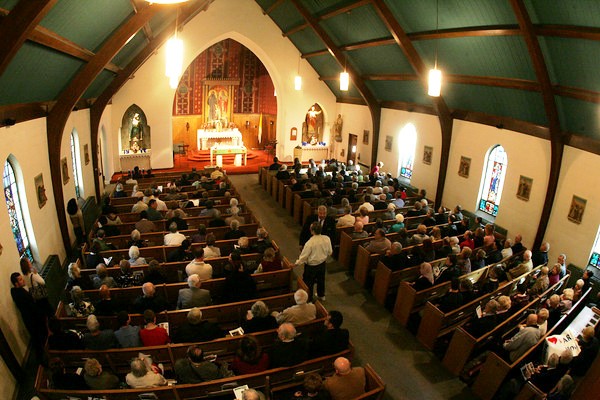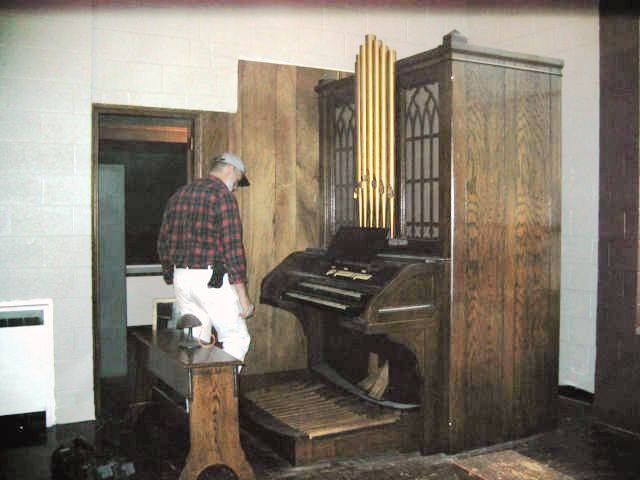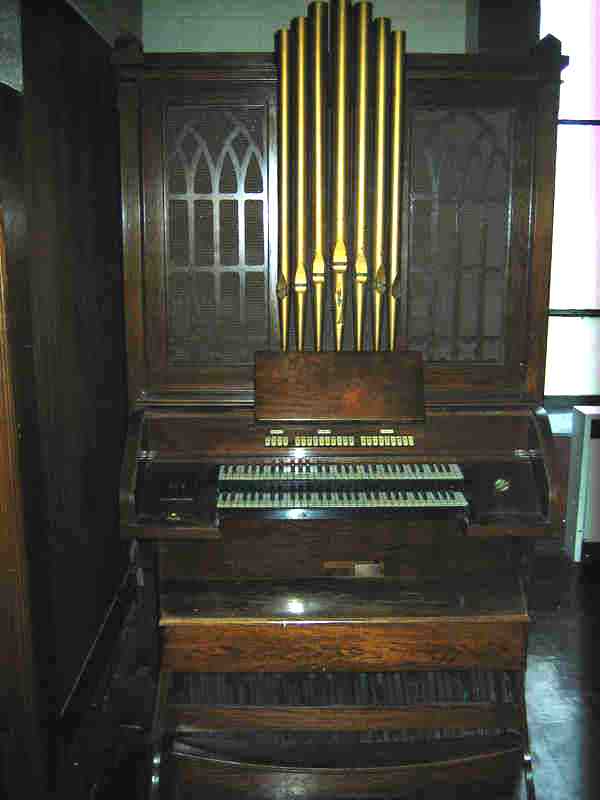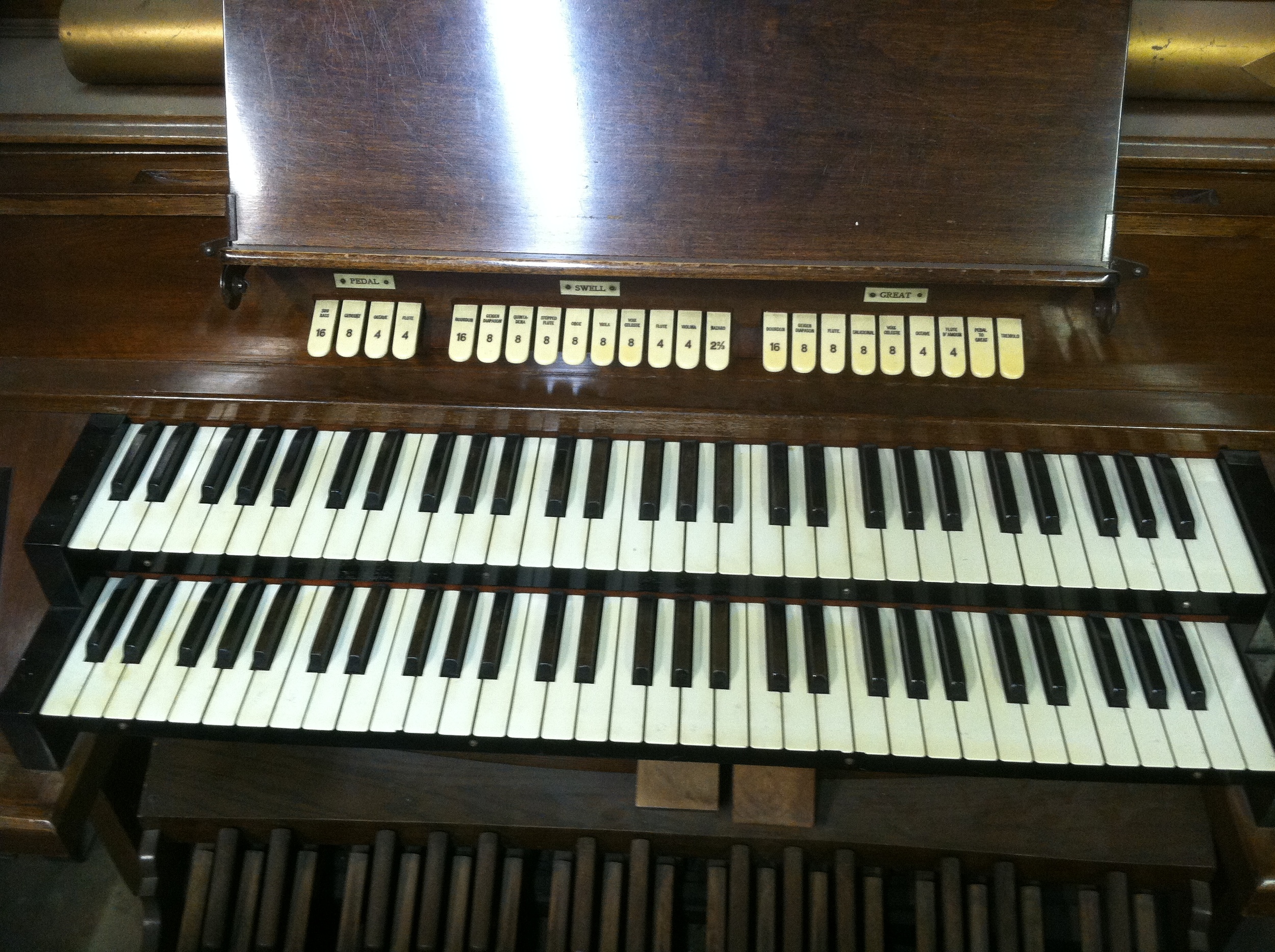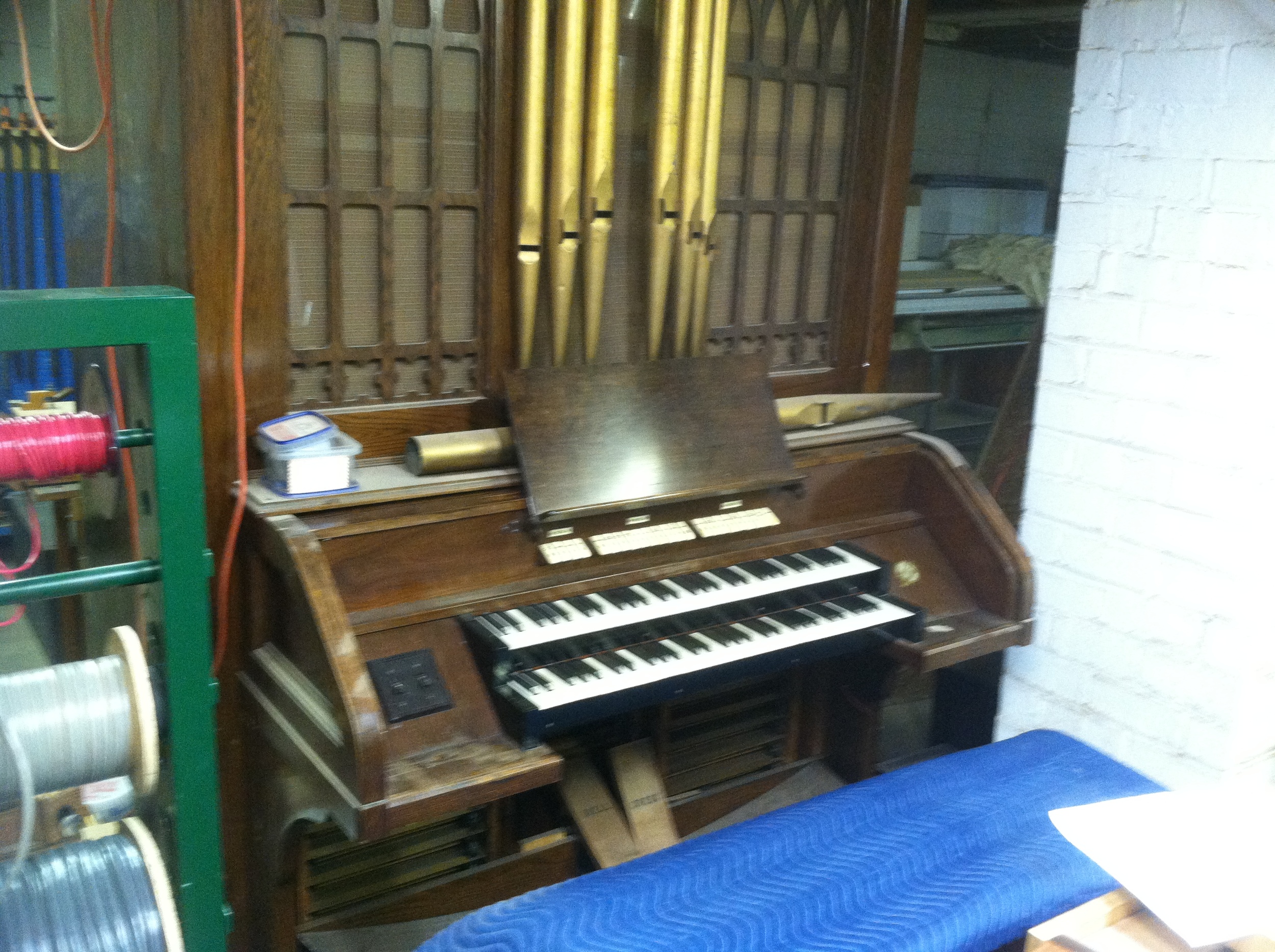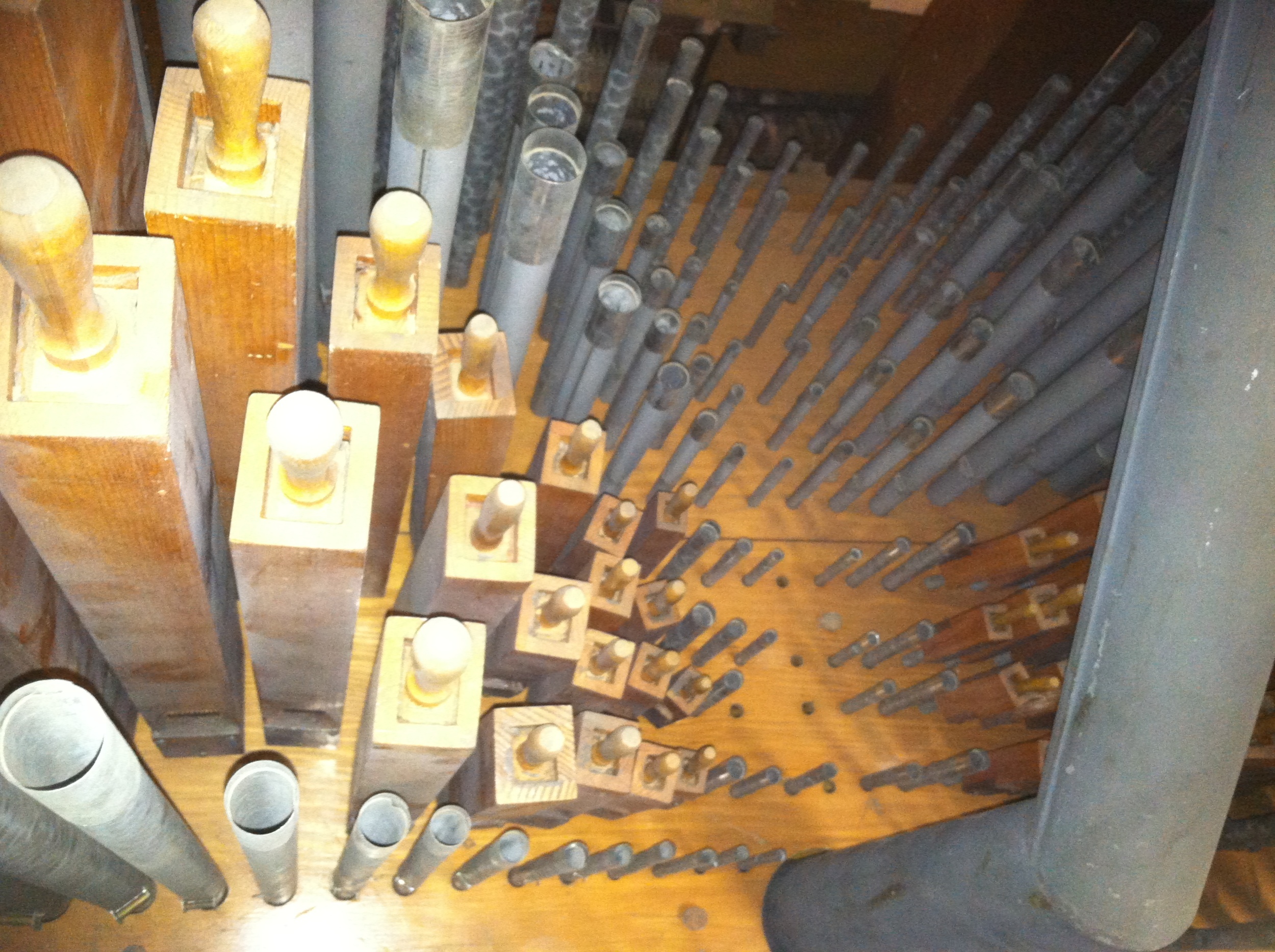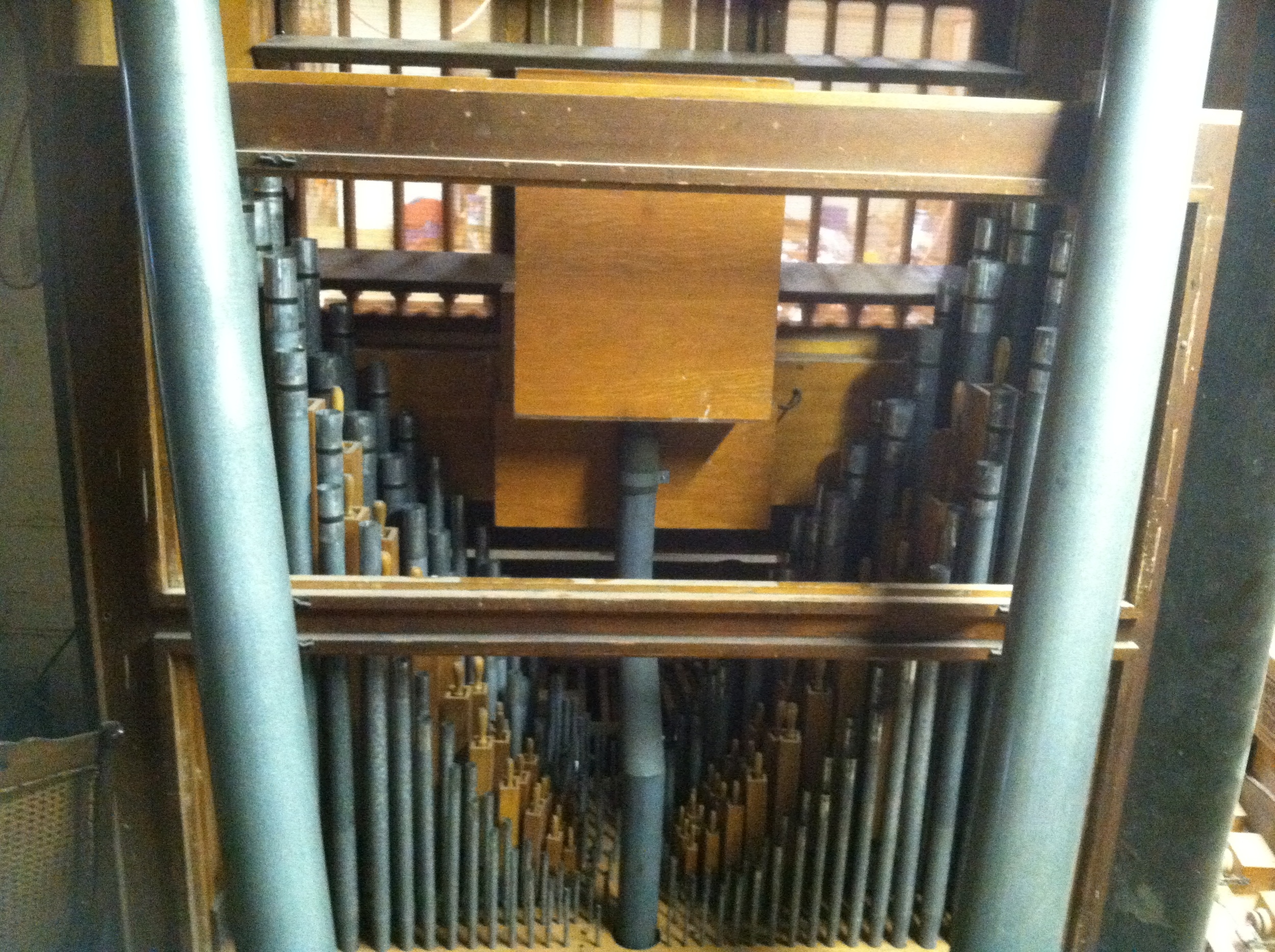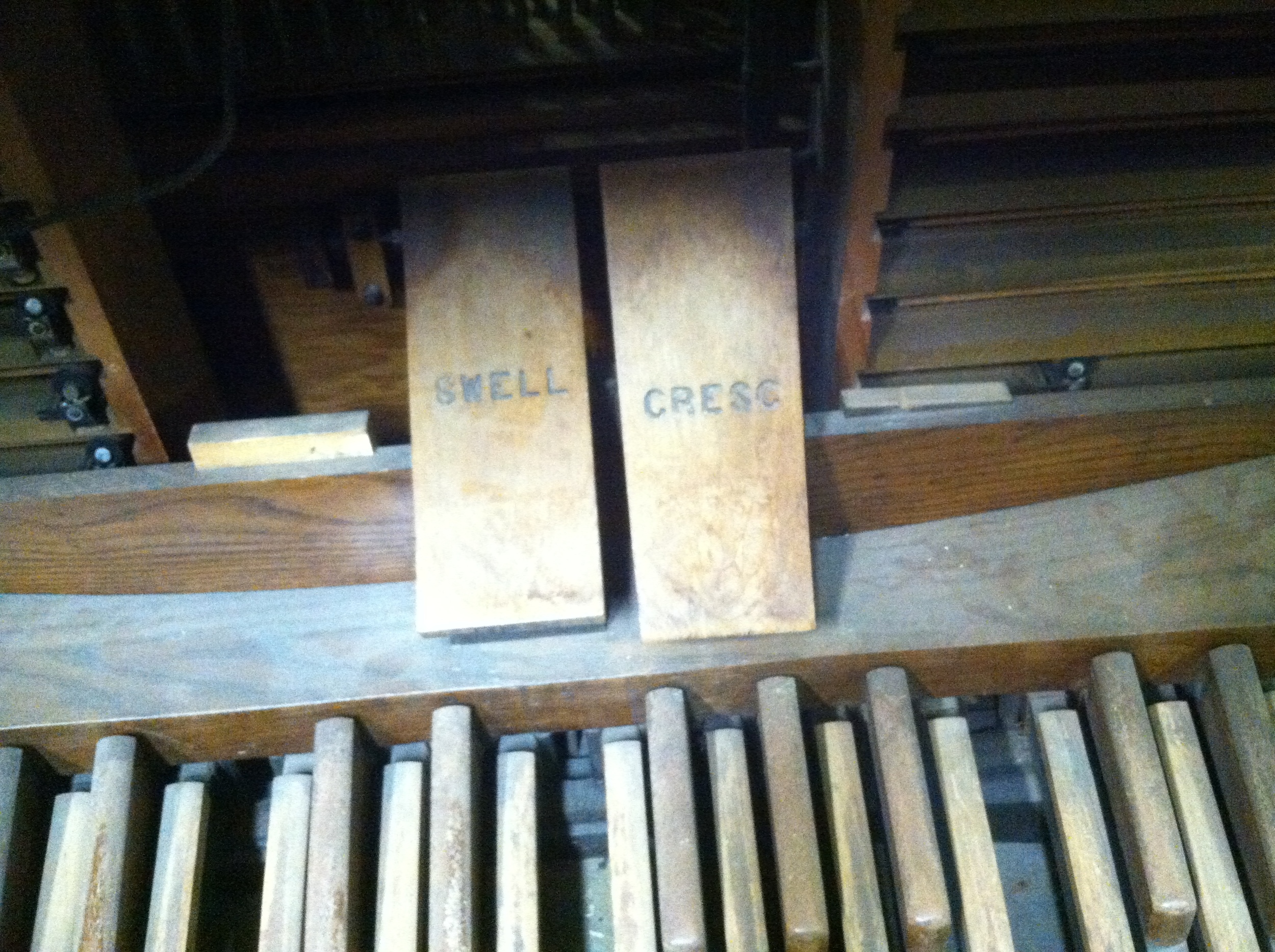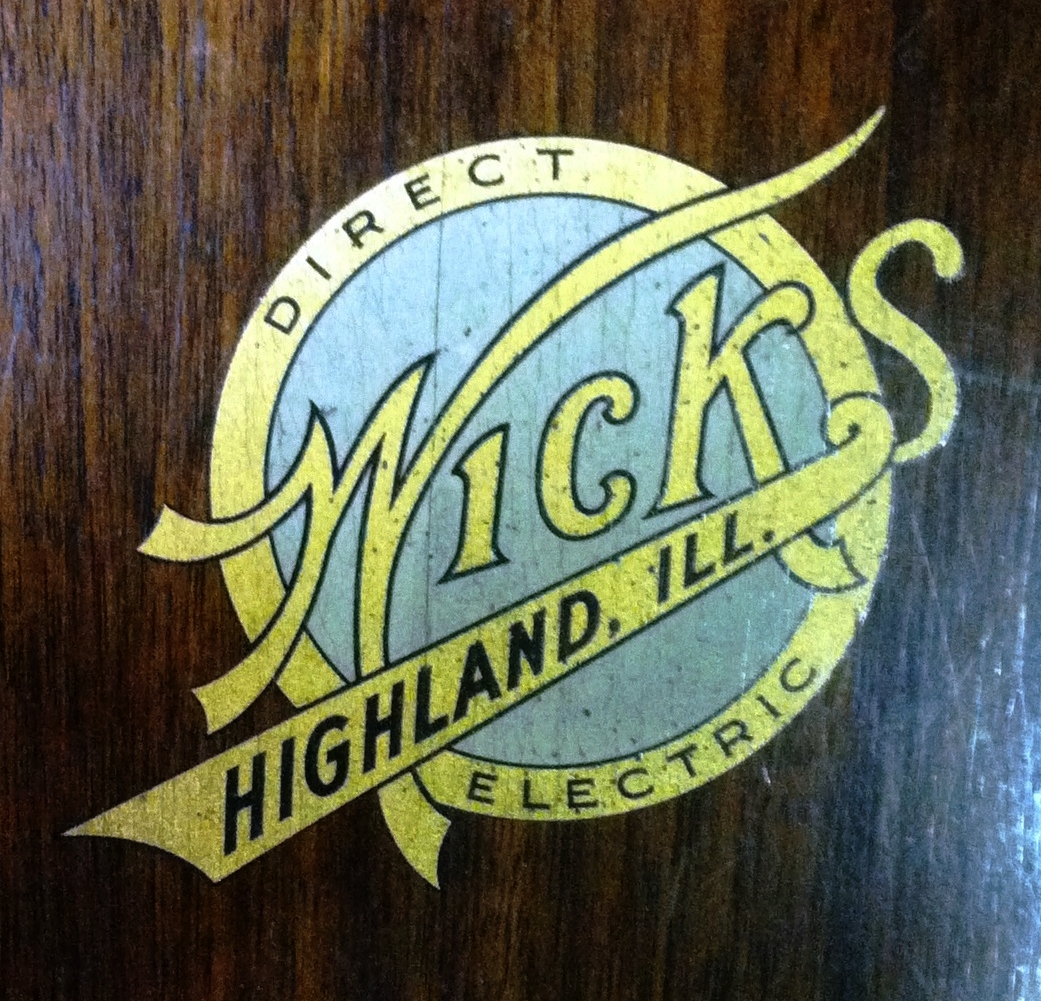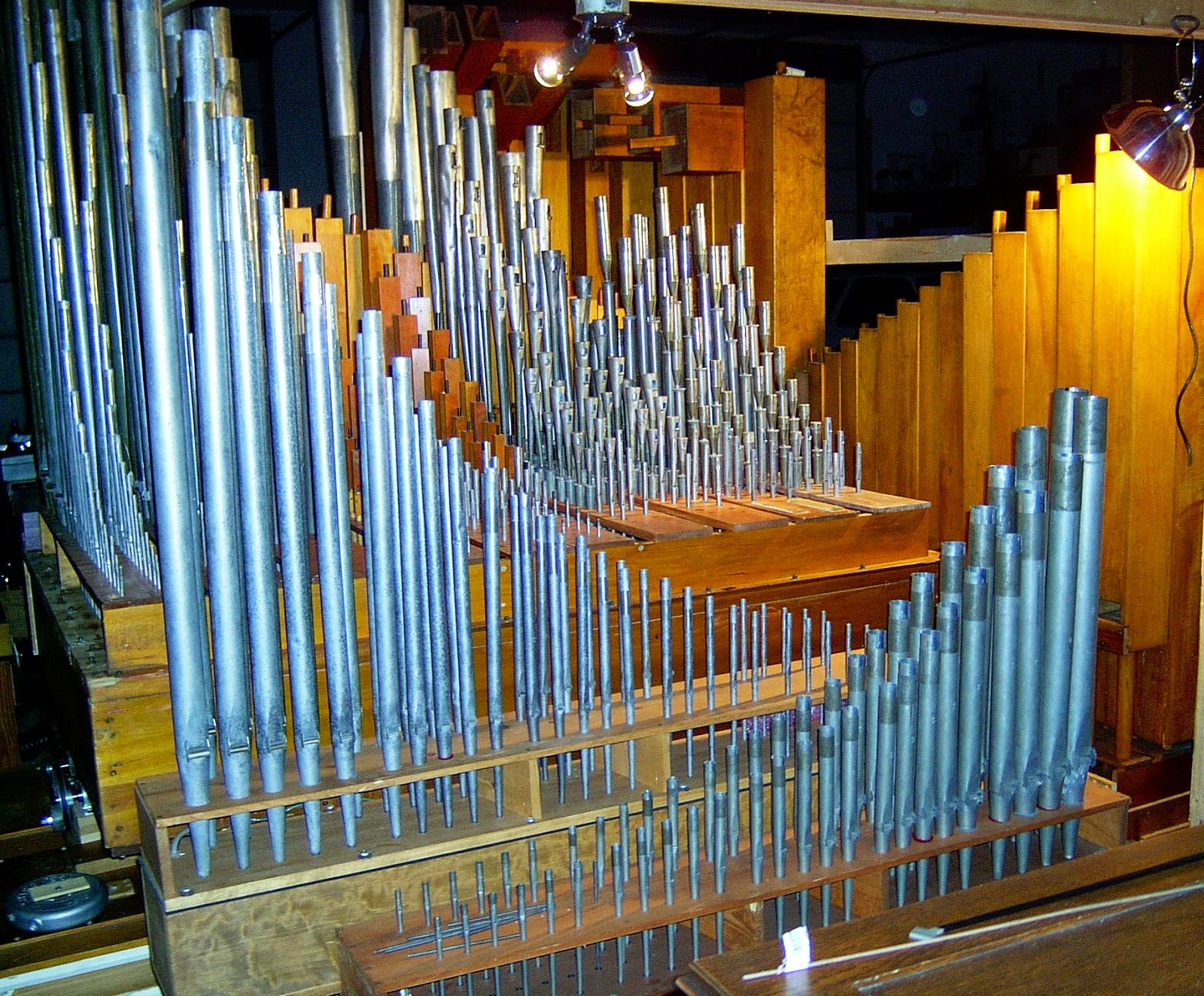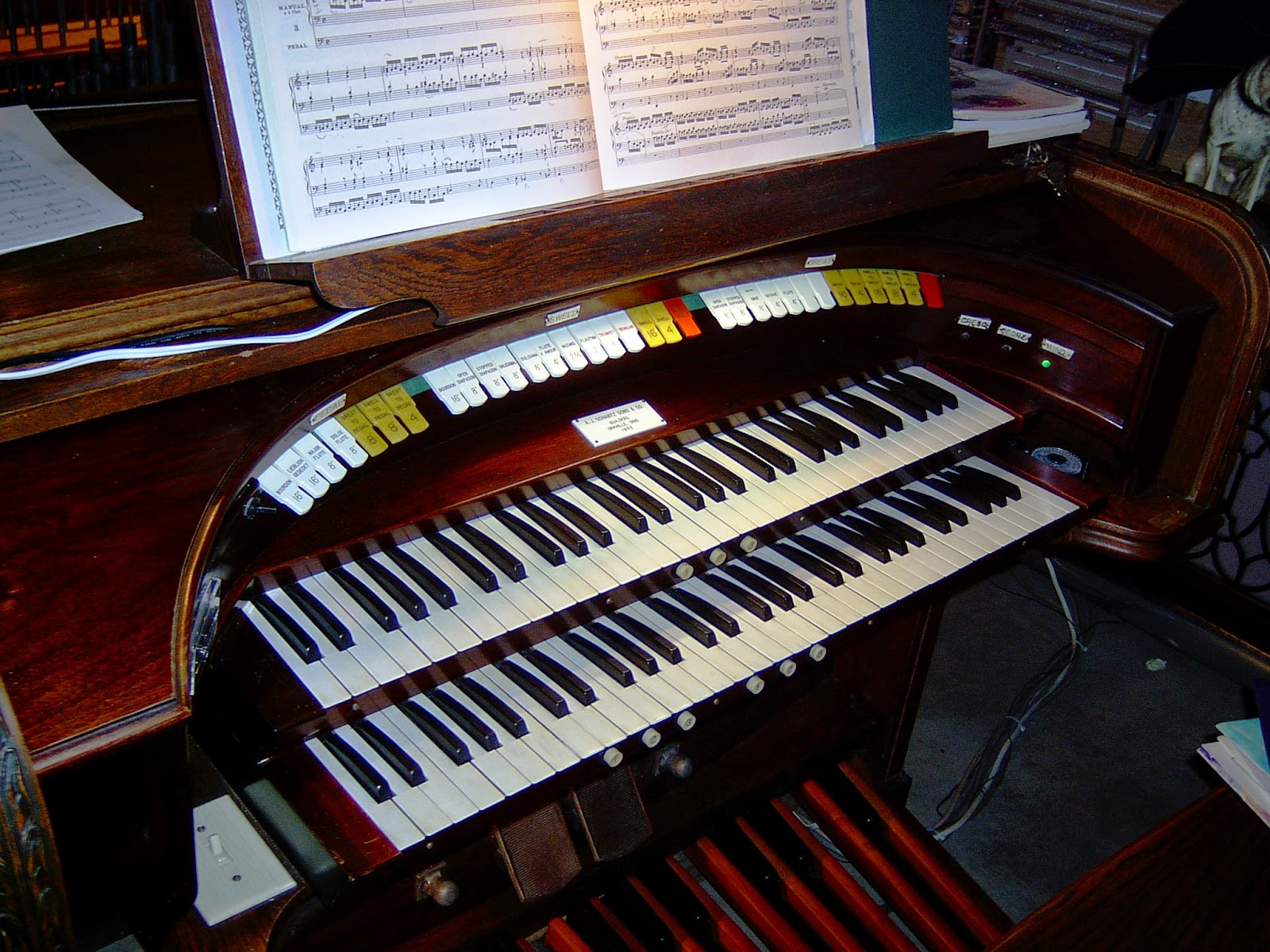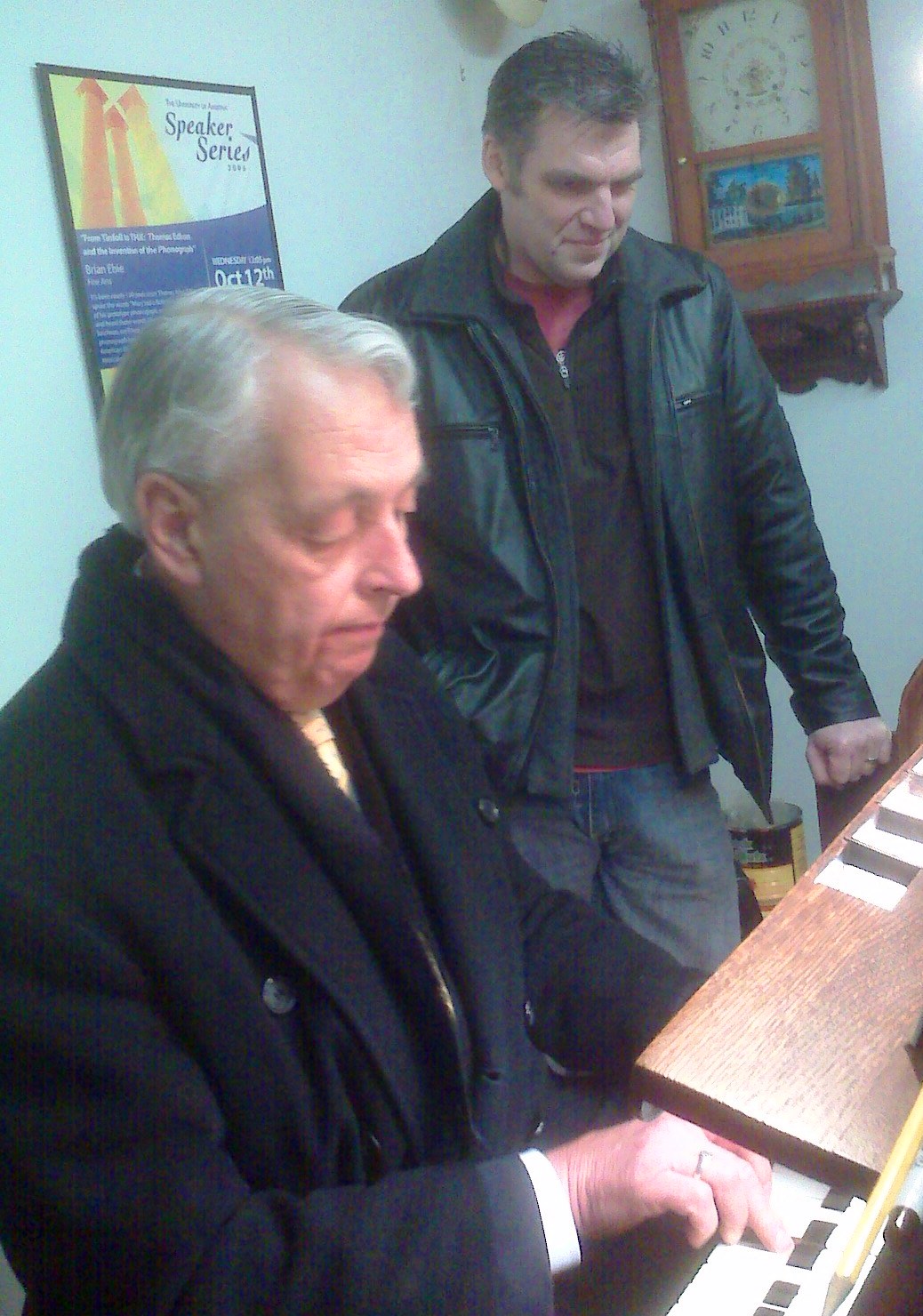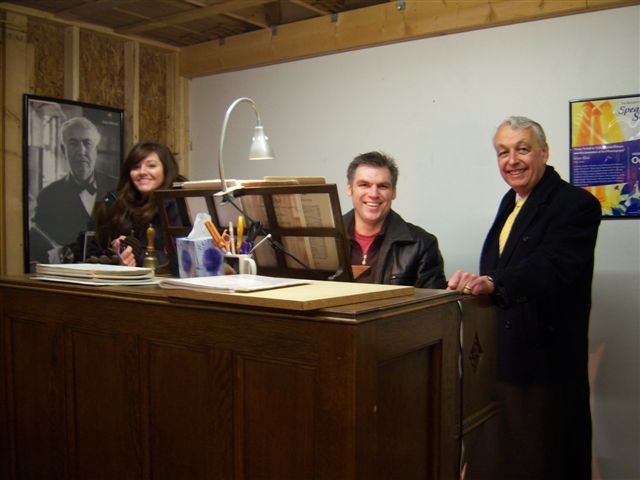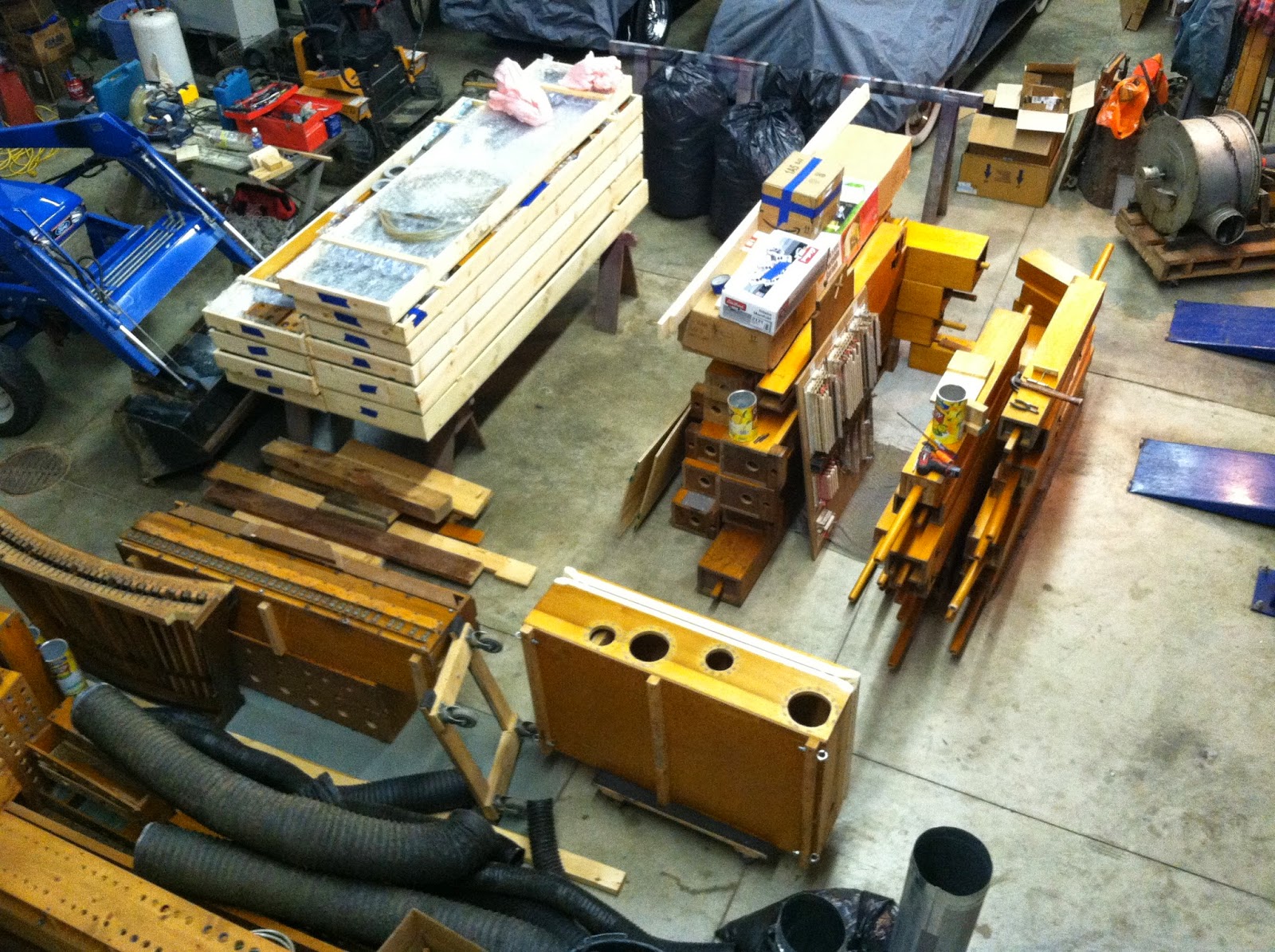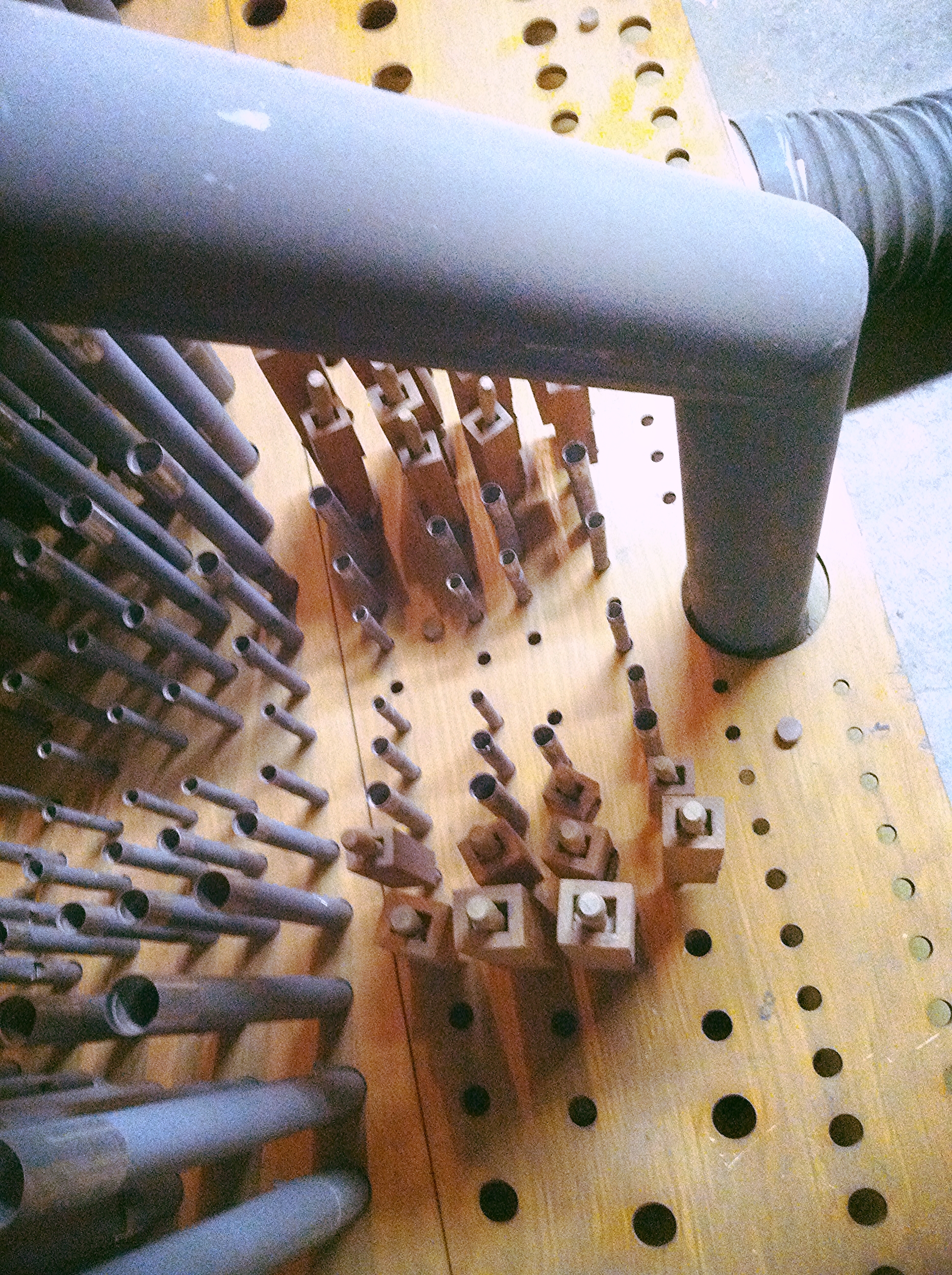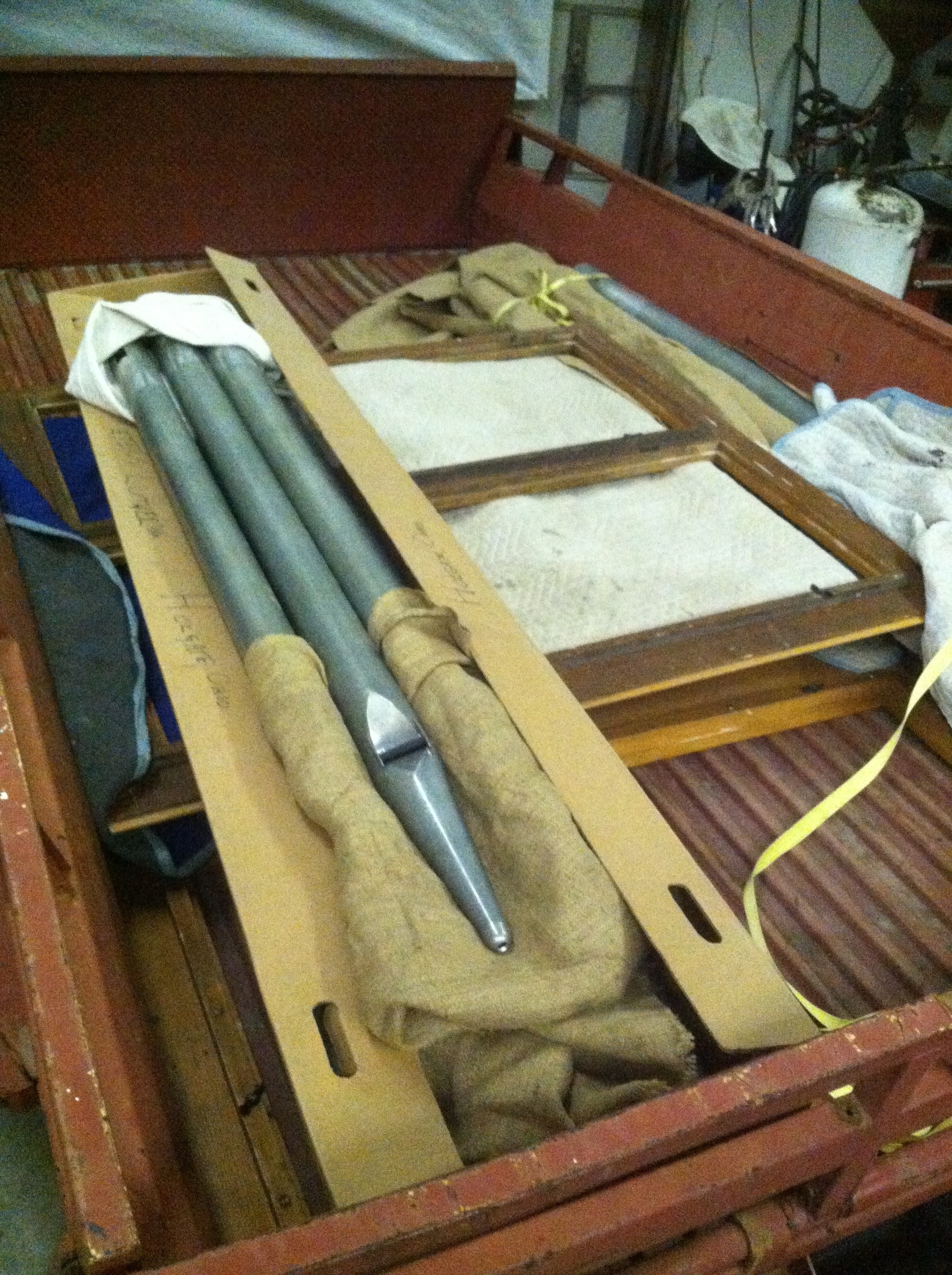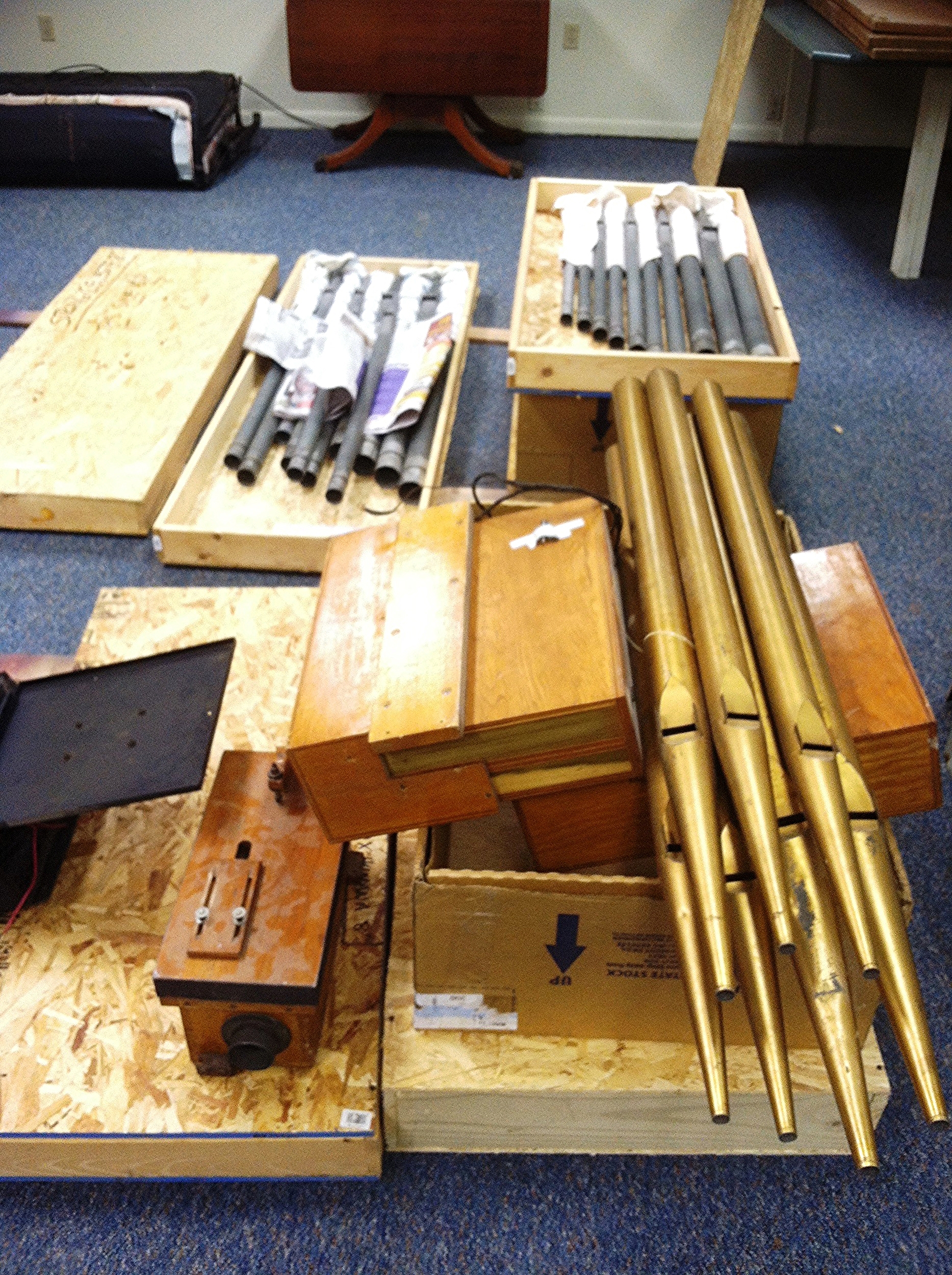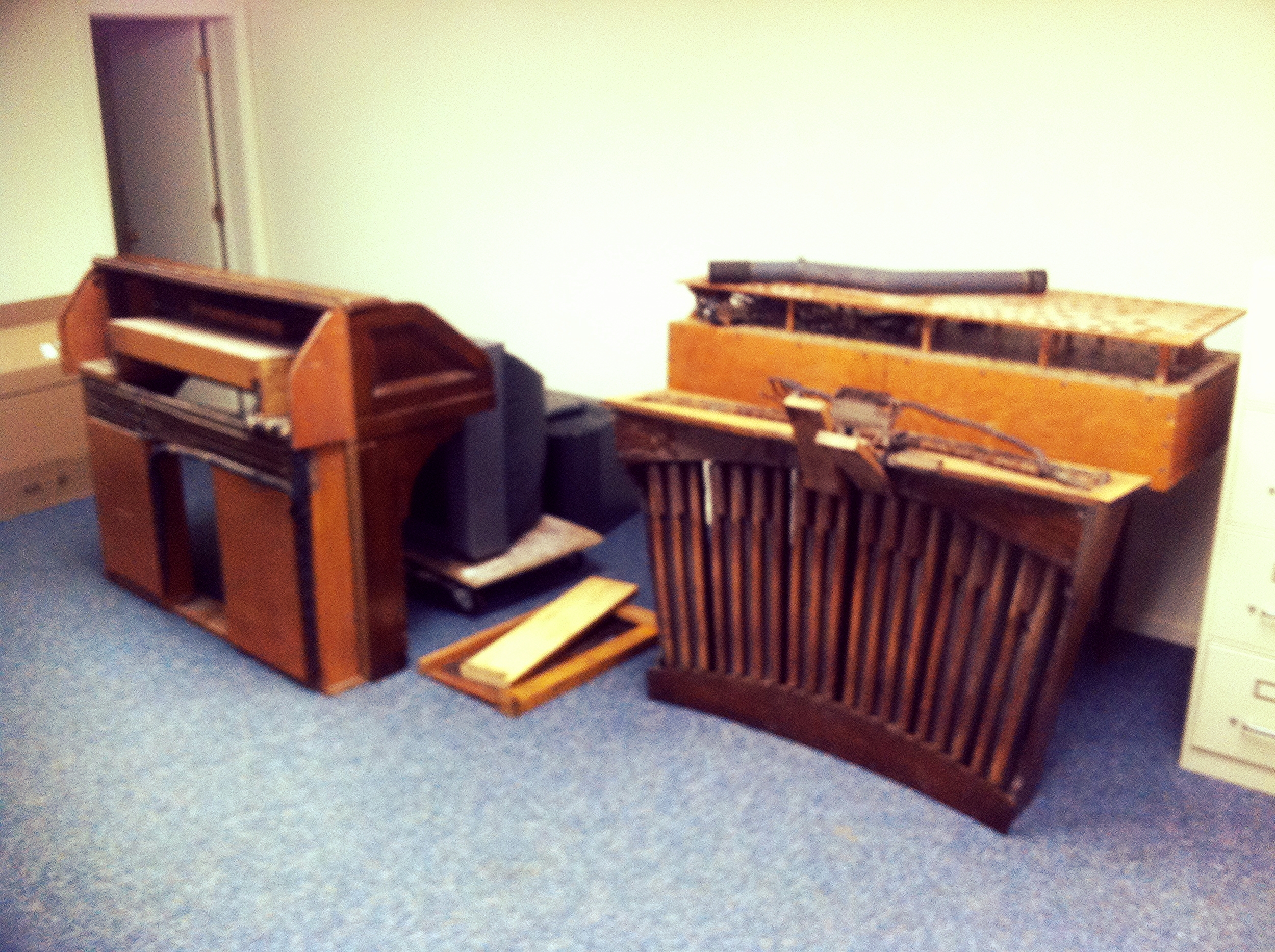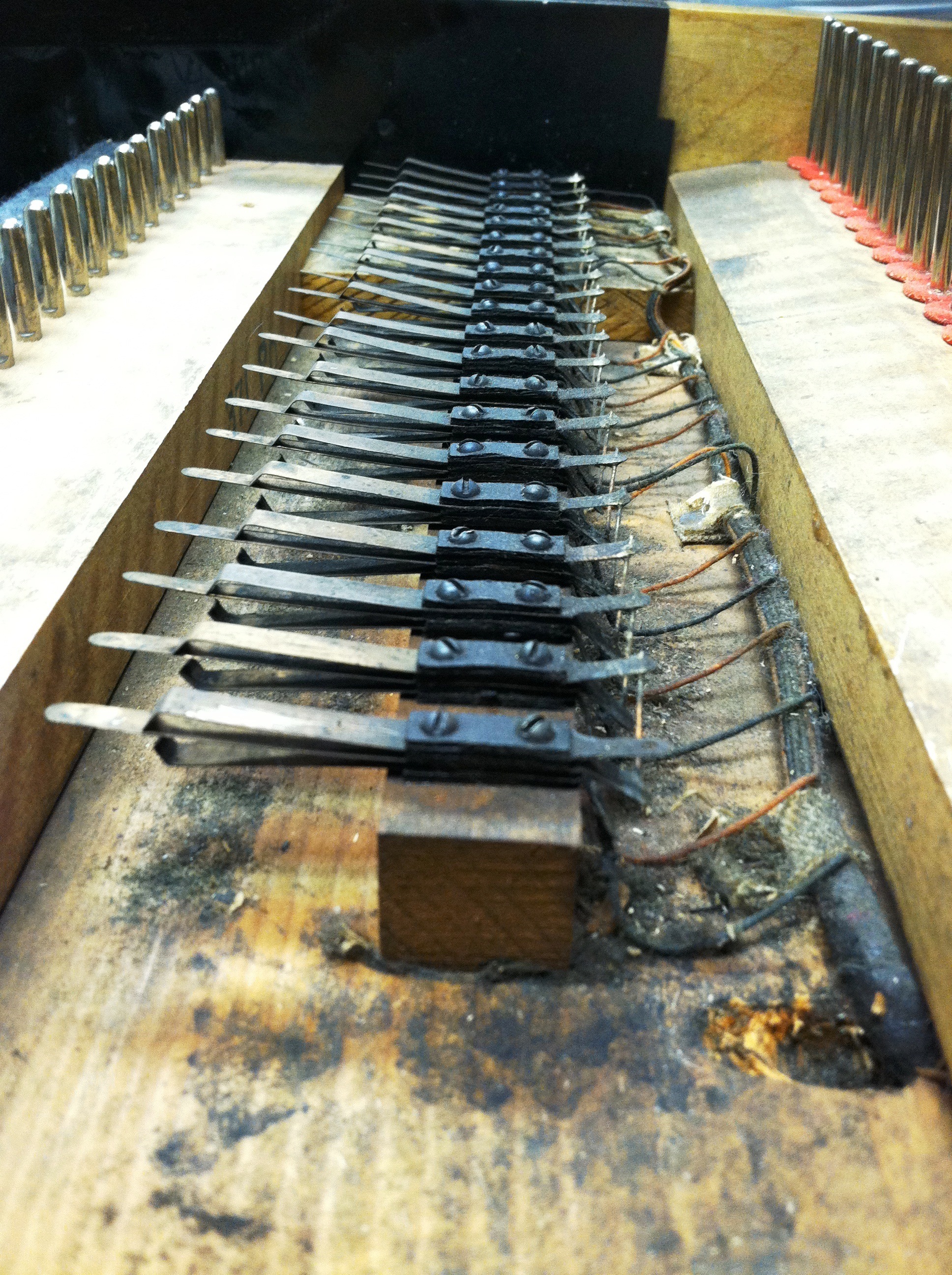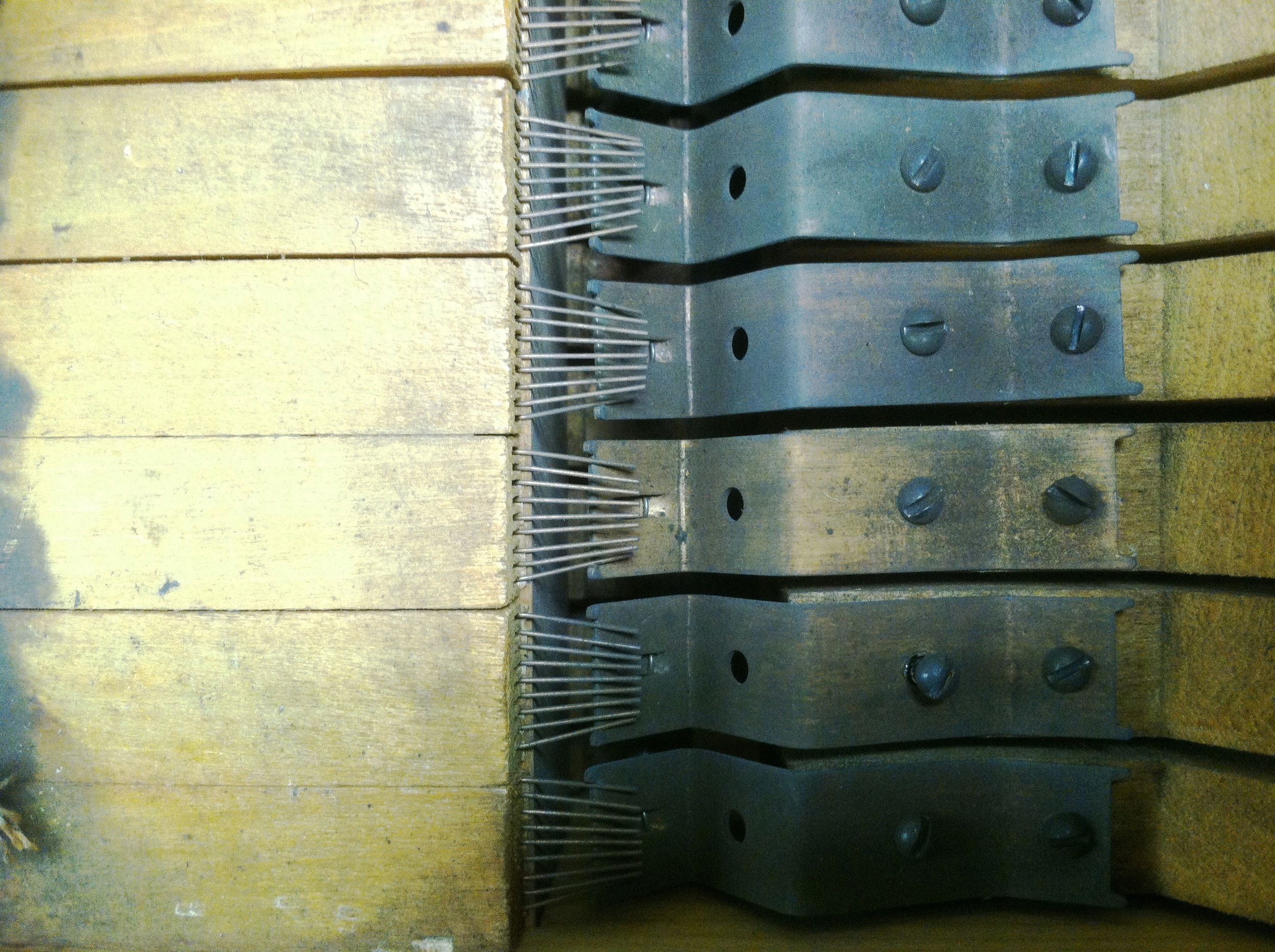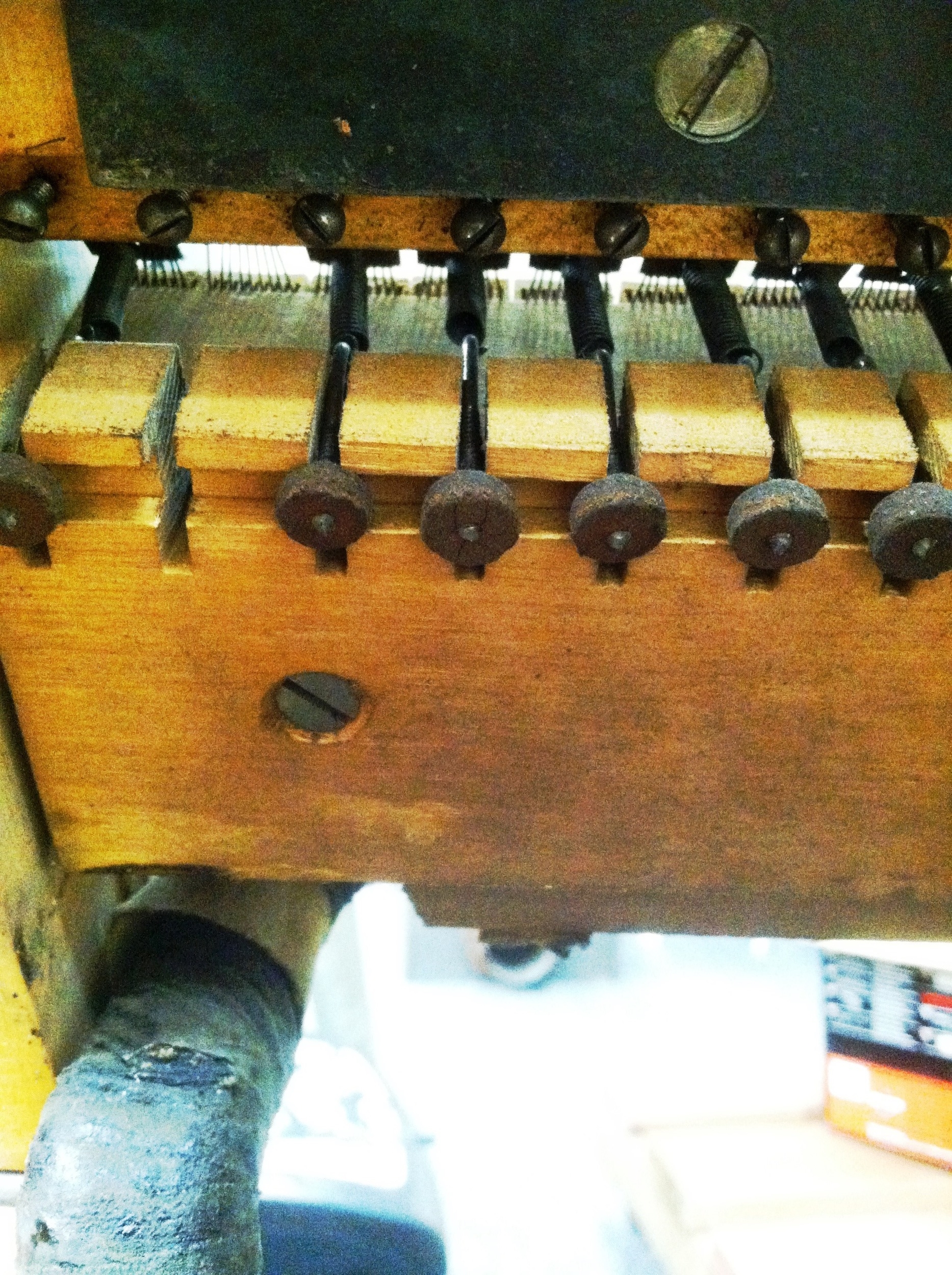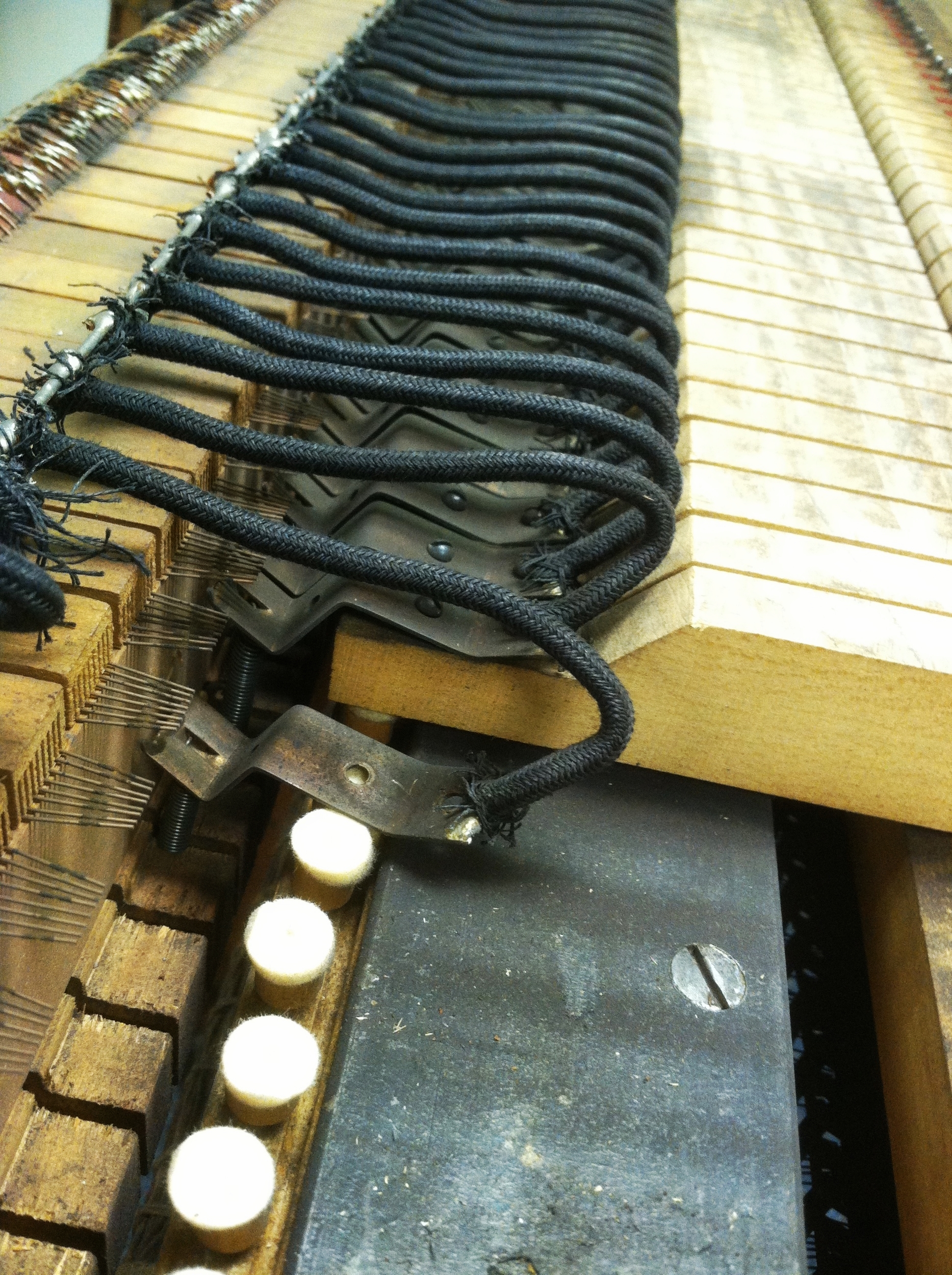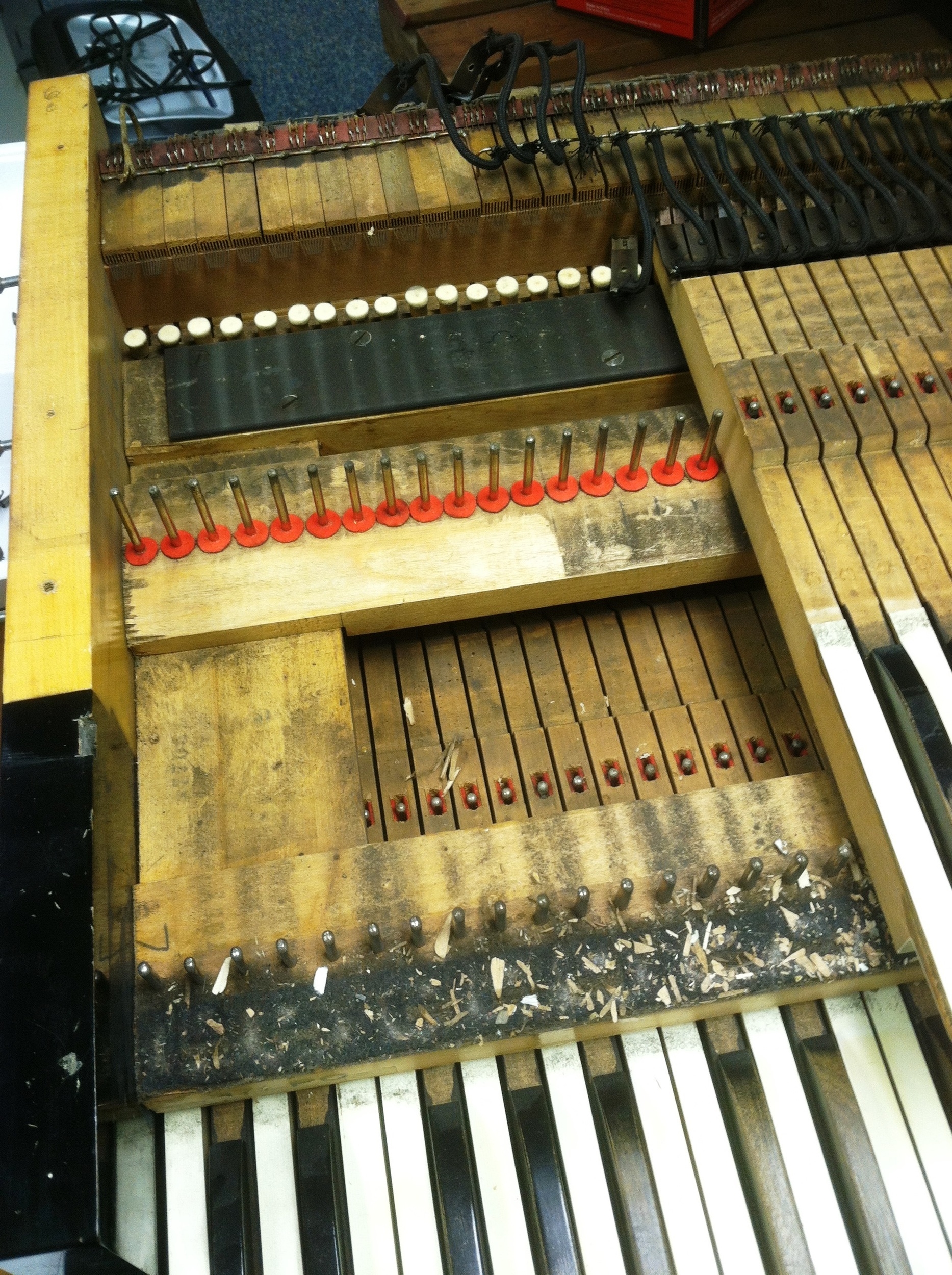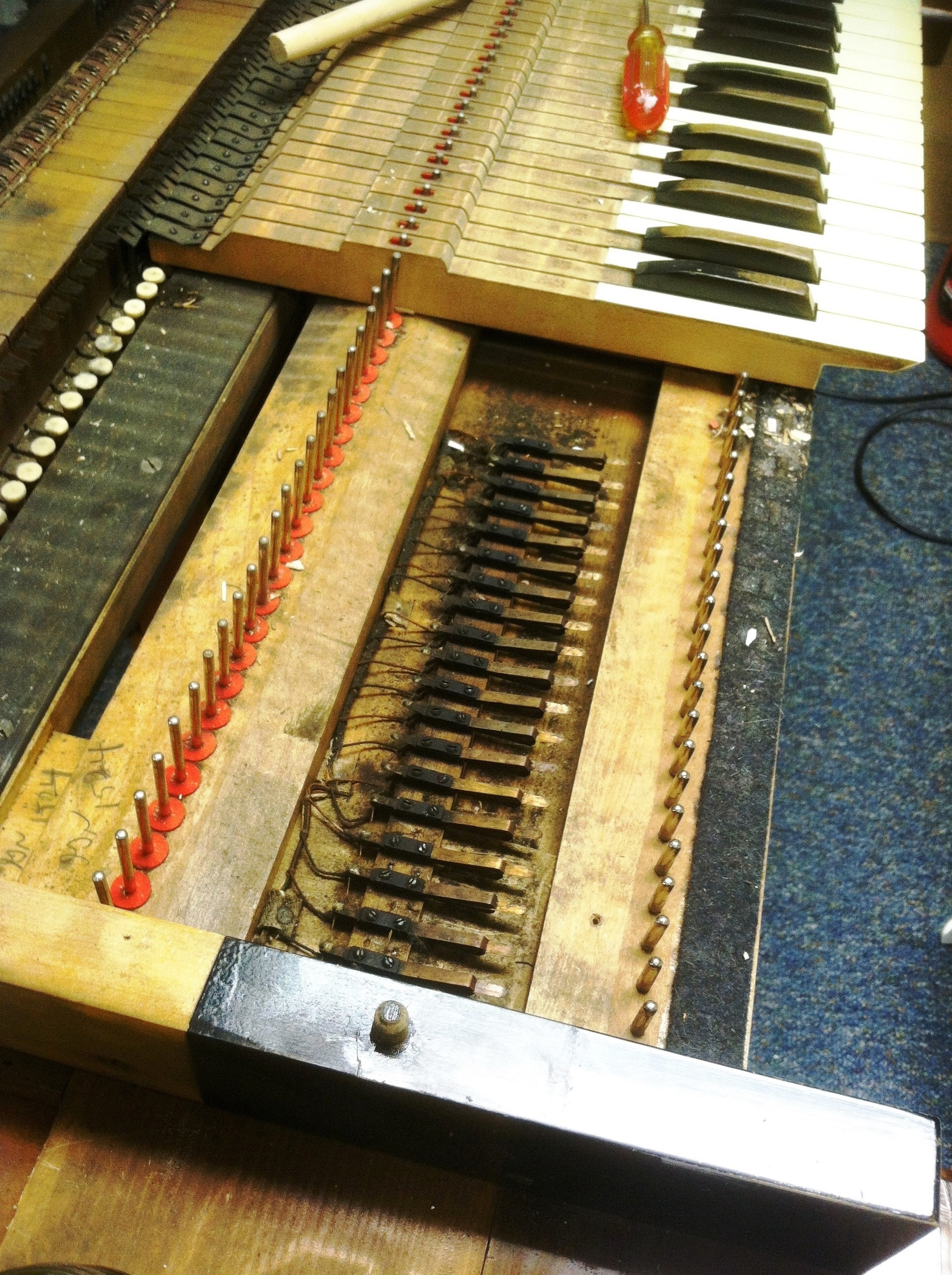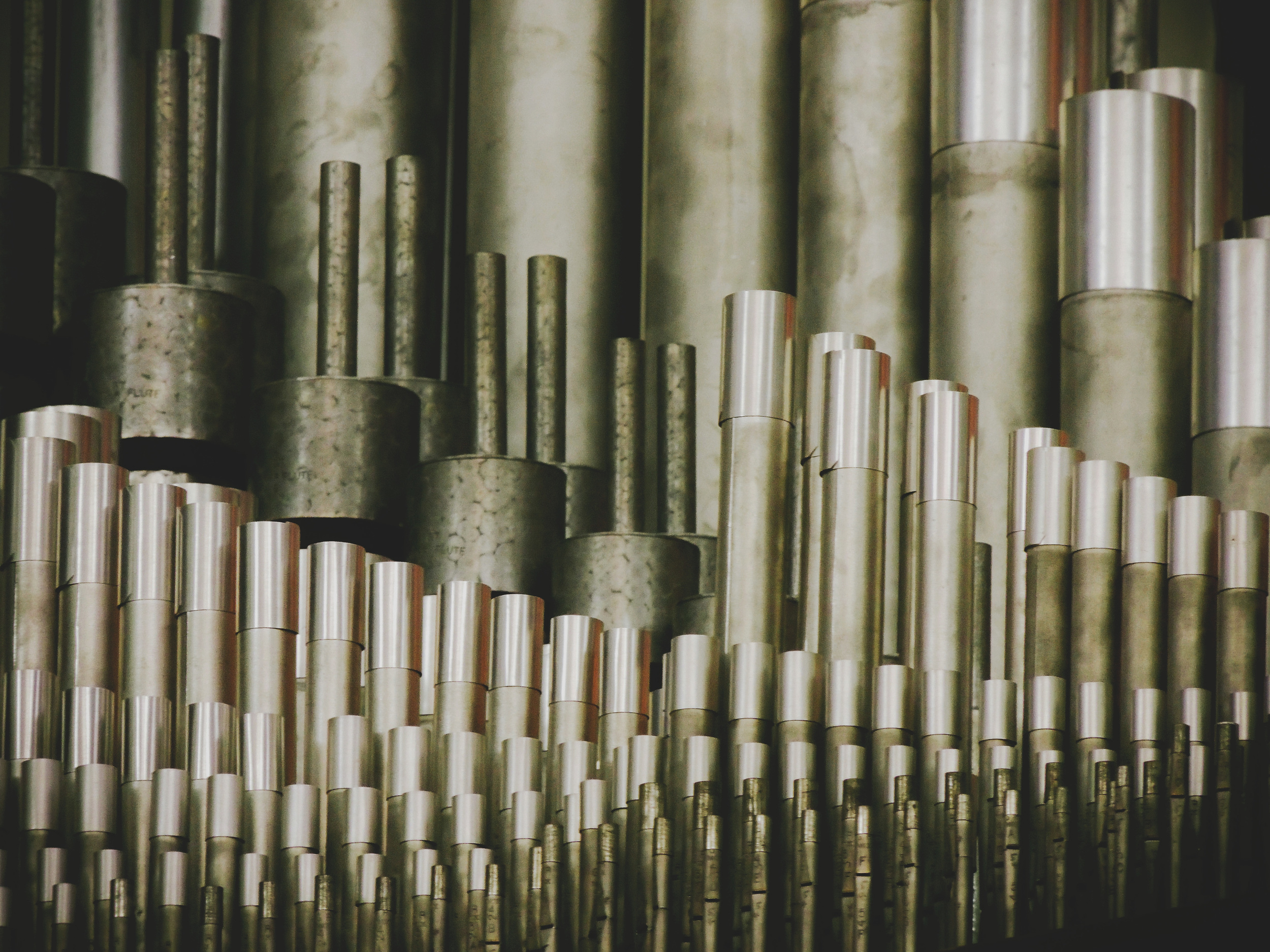






Tuning
Tuning
Keeping in Tune
You've heard that the pipe organ is the King of Instruments, so as such, you'd probably expect that some are more temperamental than others; but all need regular care and service. Regular tuning and maintenance is essential, not just so the instrument sounds good every Sunday. Periodic maintenance and tunings are essential to protecting the stewardship investment of the church or university organ and ensures its overall preservation.
Do you ever wonder how there can be organs built in the 1700's still playing in old cathedrals in Europe, yet the one in your sanctuary might be on its last legs? Consistent tunings are key. When Brian is able to hear and play an instrument on a regular basis, he is able to catch problems before they get worse and cause other issues, and troubleshoot pesky issues organists seem all too willing to just 'work around.' But don't fear if yours already seems in bad shape. Brian often finds organs that have simply been neglected or poorly serviced, giving the impression that it is in much worse shape than it is in reality. Resetting temperaments and re-pitching divisions can have a dramatic effect on the sound of the organ.
Northeast Ohio, with its usual wild weather patterns and temperature extremes can dramatically affect the tuning of a pipe organ. Pipes expand and contract in the heat and cold, wooden pipes and leather stoppers absorb moisture in humid months and dry out in the dry ones. We’ve all experienced a week in the Cleveland area with furnaces running on Monday and air conditioners by Tuesday afternoon. The pipe organ is very sensitive to these changes and when compounded over the course of a year, can be pushed out of tune pretty dramatically.
I recommend tuning two times per year. Typically when the heat comes on to stay in the late fall—around the month between Thanksgiving and Christmas; and just before Easter are good benchmarks. Some of my customers prefer an annual tuning and these are generally done either in the fall, or at a requested date. On the other end are the churches with regular performances, weddings, and so forth that require a good many “touch up” tunings throughout the year. And yes, I’ll even gladly come and tune just that one wild trompette note that’s driving you crazy.
Services Available
General Tuning | Touch-up & Spot tuning | Setting Equal & Unequal Temperaments
Cone tuning | Pipe Speech | Volume Regulation | Voicing | EMERGENCY TUNING
A Note about Building Temperature
Because temperature can have an enormous effect on pitch, and tuning, it is important to have the building heat turned on at a normal temperature for 12-24 hours prior to the scheduled tuning. While the sanctuary temperature may feel warm enough in just an hour or two, remember that the pipe chambers are mostly enclosed and therefore take much longer to equalize

Cleaning
Cleaning
Dust Off Your Pipes
You’d be surprised at how much dust ends up in a pipe organ chamber. While dust doesn’t necessarily hurt anything, it eventually accumulates into trouble for reed pipes. Being the overly sensitive creatures they are, reed pipes can sound terrible or stop speaking altogether when they are around too much dust. Then there’s the dreaded cipher. That note that just starts playing and won’t stop. It’s surprising how often it is because a valve is held open ever so slightly by, you guessed it… dust.
So the chambers need to be cleaned out now and then, but it’s not a job for just anyone. Care must be taken to not damage pipework, wiring, and other things inside the chambers. I once cleaned out the chests and pipes on a 112 year old organ. There was literally ¼” of dust coating the thing. When working in your building, I am extremely sensitive to your worship needs and will work with you to create a cleaning schedule with the least possible interruption.

Appraisal & COnsultation
Appraisal & COnsultation
Understanding the Physical Value
Sometimes it’s good to know for insurance purposes the value of the pipe organ in your church. Brian uses a special form to thoroughly document the present condition and function of the instrument as well as offer replacement and fair-market-value pricing information.
Input and Advice
Brian is available to advise you regarding any issue relating to your pipe organ. His favorite is when a church is looking to add pipes! Oh oh oh! (please excuse the man grunt - that's just awesome news)! He can assess the condition or location of your instrument, make recommendations regarding repair, expansion, or replacement. Brian will help you create a better environment for the long-term care of your instrument, assess its value for appropriate insurance coverage, and advise you regarding the possibility of large-scale repairs that may be necessary in the future.

Wicks Fuga Pipe Organ
Wicks Fuga Pipe Organ
THIS PAGE IS UNDER CONSTRUCTION
This is the story of a Wicks Fuga Pipe Organ, Opus 1524, built in 1936 and consisting of two manuals and pedal, four ranks, and case style number two.
Originally built for Saints Cyril and Methodious Catholic Church in Lorain, Ohio, it faithfully served parishioners for 73 years, sitting in the corner of the rear balcony, playing for at least four masses each week, and countless funerals and weddings.
The Wicks Organ Company of Highland, Illinois introduced a line of small pipe organs in the 1930's, some of them in self-contained cabinets, marketed towards schools, homes, churches, and funeral homes. There were various models of these unique instruments, including the Sonatina, Aristocrat, Fuga, Fuga Deluxe, and Rhapsody. Some models were as small as an upright piano case with an attached console, while others were a chambered instrument with detached console. Instruments varied in size from two to six ranks, and through the use of unification, made full use of their tonal resources. Several models utilized Wicks' unique use of 16' free reeds to accomplish the 16' pedal stop rather than taking up space for regular 16' pedal bourdons. Many models could be purchased for less than $1000.00 USD.
In 2009, Bishop Richard Lennon of the Cleveland, Ohio Diocese announced the closing of 52 churches throughout northern Ohio based on dwindling church attendance, lower revenues, and too few priests. Ss. Cyril and Methodious Slovenian Catholic Church at 1709 E. 31st Street in Lorain was one of the churches slated to close. On Sunday, October 4, 2009, some 104 years after it's founding, the church celebrated its last mass. The building closed, the grounds and contents were put up for sale, and our journey begins shortly thereafter.
Jon and Greg Lester, Wicks Organ Company service technicians, were able to acquire the organ and remove it from the empty building in 2011. When I found out they had this organ, I arranged to meet them on a rainy summer afternoon and played it for about 15 minutes where it was set up in their shop. I immediately fell in love with the instrument and brought my wife over to see it a few days later. She loved it too and I purchased the organ from them in 2012 and set about the process of readying it to go into our home.
For over 20 years I owned a Schantz Pipe Organ that I removed from a church in Barberton, Ohio in 1992 and had restored and enlarged. It was a great instrument and versatile in it's disposition. Not much literature existed that I couldn't play on that organ. But it was too big to be in our home. In fact I'd owned three homes during the time I owned the Schantz and it really wouldn't fit in any of them! I needed something smaller and (I thought) more utilitarian for home. I had been looking for a Moller Artiste but was not even aware of the line of small instruments built by Wicks. When I found Wicks Opus 1524, an entirely new world opened for me!
Below are a few pictures of the Schantz in place, and with Mormon Tabernacle Organist Clay Christiansen giving it a spin, as well as a final picture of the organ disassembled.
The Wicks Fuga is mostly modular, in that there is a singular unit chest containing all the pipes, a cabinet, a console, and blower. Disassembly and removal took place on a cold December day in 2012. The pictures below show the disassembly and transportation to my shop.
Generally speaking the instrument was in good shape for having sat silent for a few years. The case was in need of refinishing and looked like that at some point it had been re-varnished with a paint roller, forever sealing in whatever hair and dust and tape fragments happened to be on the cabinet when the roller rolled. The keys were covered with rosewood sharps and "ivorine" naturals. Both were worn and pocketed, with the ivorine having several chips on the ends of keys. While the finish was worn off the pedals, the wood was not worn. Key contacts were dirty, a few loose connections here and there, and dusty and sooty.
I decided to re-cover the naturals and replace the sharps. Happily, I conferred with my friend and highly-skilled piano technician Mark Opritza, who suggested that I have the work completed by Rochester Piano Key. Tom at Rochester Piano Key recommended Vagias simulated ivory keytop material and sent me a sample card. I chose a satin, off-white color. Following their directions, I removed and numbered all of the naturals, wrapped them and shipped them to Rochester. I decided to replace the sharps myself.
TO BE CONTINUED....

Repair & Restoration
Repair & Restoration
Repairs Big and Small
In organ work, Brian considers himself a partner with you in the stewardship of each and every instrument. If you haven't noticed, he loves and, more importantly, respects the pipe organ and takes his role in its maintenance very seriously.
While designed for continuing generations, over time a pipe organ will inevitably require some repairs. For your congregations and elders who seek to preserve the best of the past for enjoyment well into the future, his services include re-leathering, restoration, reconditioning, console and electrical upgrades, tonal enhancement, magnet replacement and more.
Brian Ebie's background as a performer and service technician combines the pragmatic with the artistic and the musical with the mechanical, to provide repair services equal to any in the industry.
Typical Services
Tonal additions| Pipework repair and instrument cleanings| Water damage recovery| CHEST AND RESERVOIR Re-leathering | Chest repair and replacement| Mechanical repairs

Removal
Removal
Finding a New Home
Old church buildings close. Congregations merge. Worship styles change. As hard as it is, for these and other reasons, sometimes it’s time to think about removing the organ from the building. It’s a difficult conversation, but one that now and then cannot be avoided. I am here to consult with you on the future of your pipe organ and to undertake removal when the time comes. I will do whatever it takes to see that the organ is not silenced forever, perhaps finding a new home in its entirety, or have portions sent to other organs for additions.
We can start the conversation with photographs, specifications, and dimensions of the instrument. If you are not familiar with organs, I can tell you how to gather this information. But most likely, I'll need to make a consultation call to your location to assess the situation.
I am available to dismantle, repair or restore, ship and install the organ, or to deliver the instrument to a chosen organbuilder. If I am able to sell your instrument, I charge a flat rate of 10% of the negotiated purchase price. Other costs such as travel to your building and onsite consultations are negotiated separately and are in addition to this broker fee.

